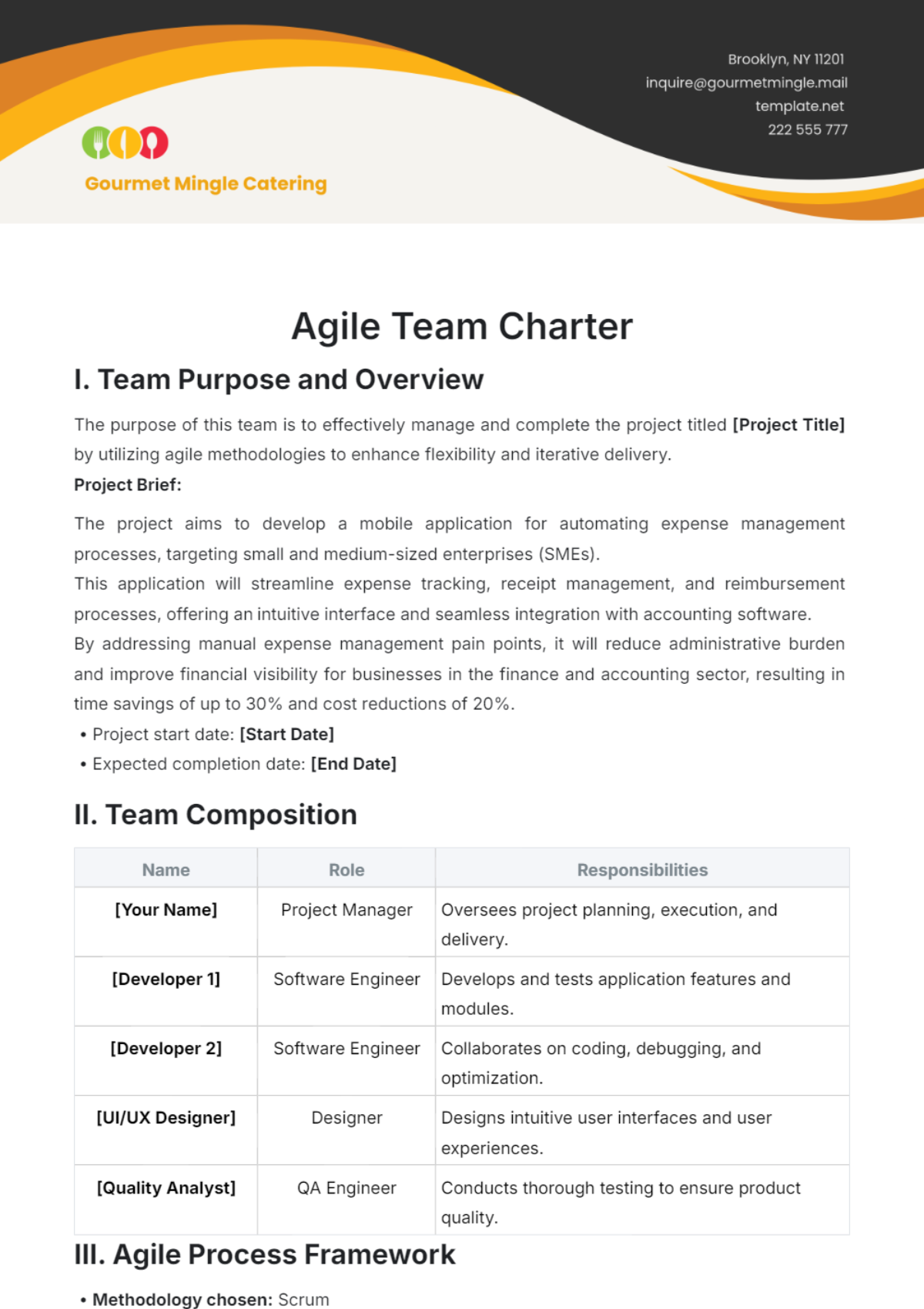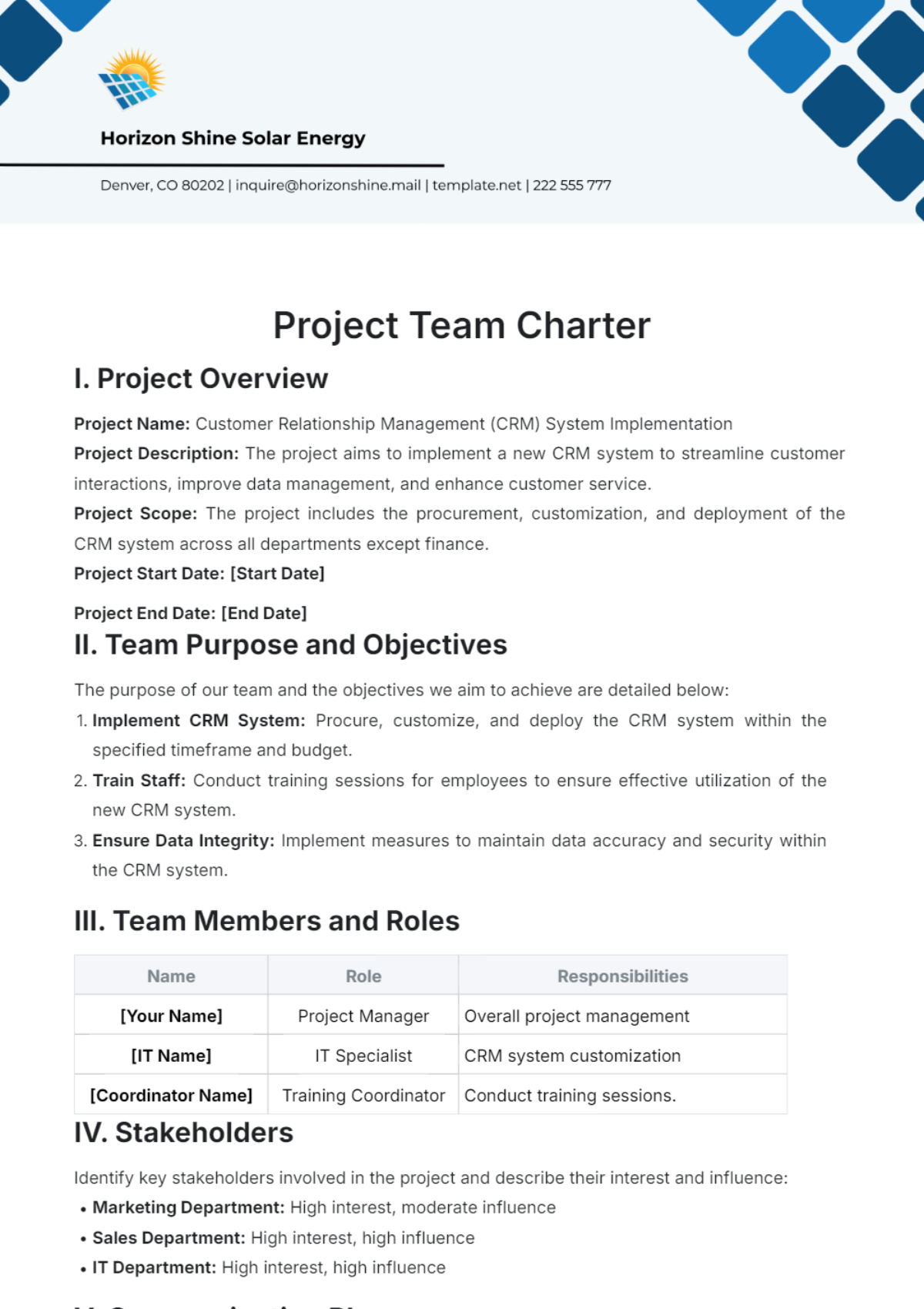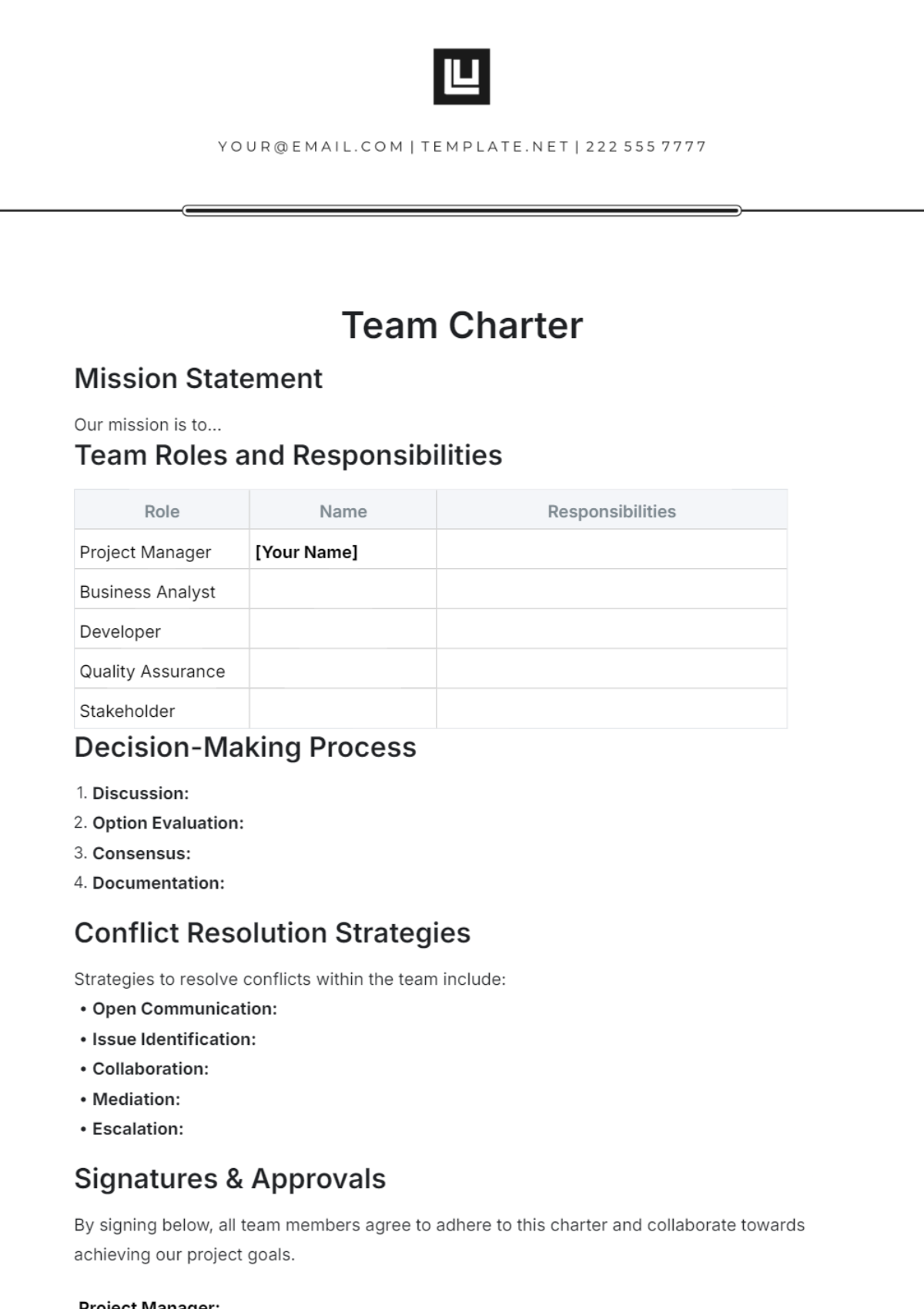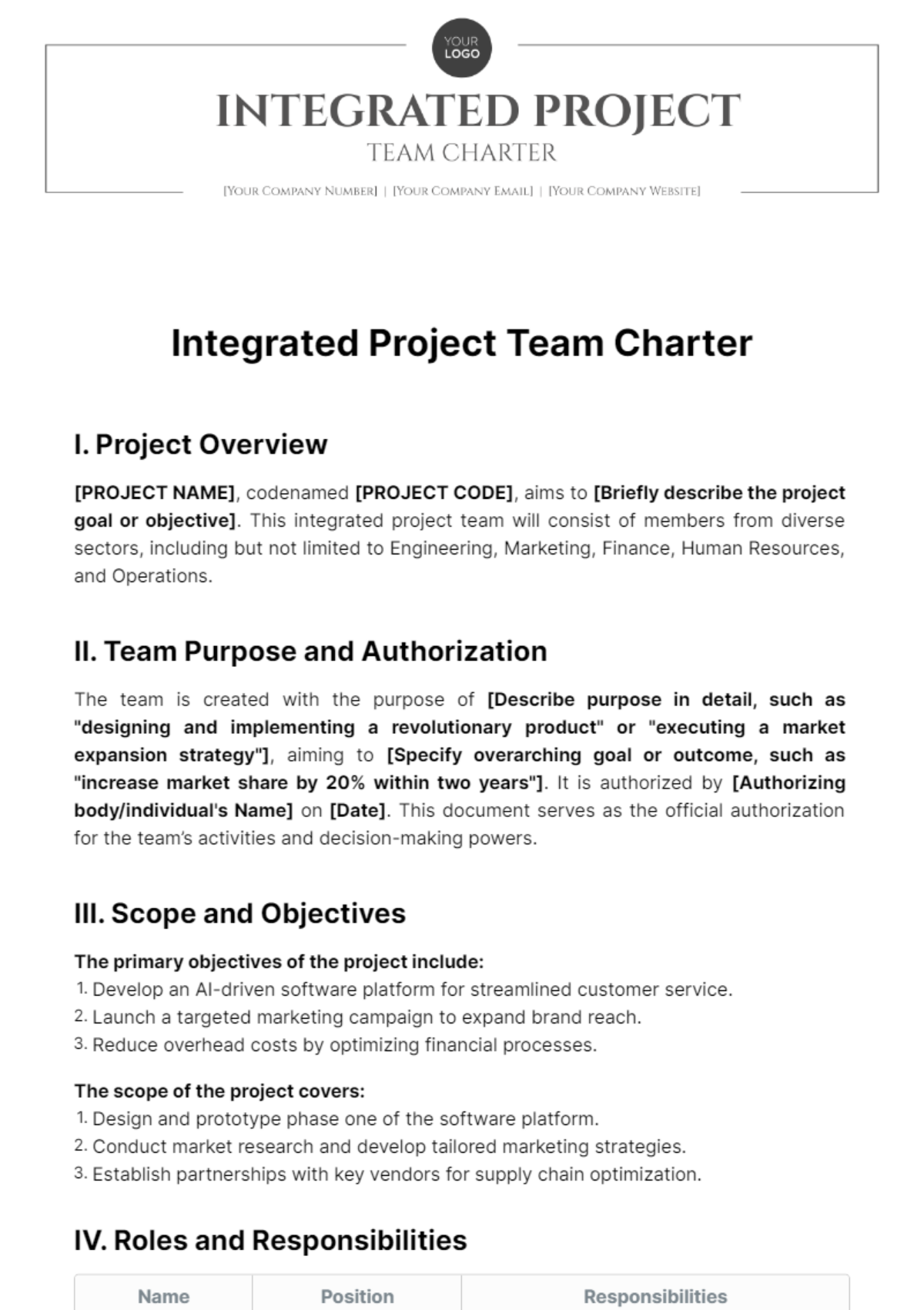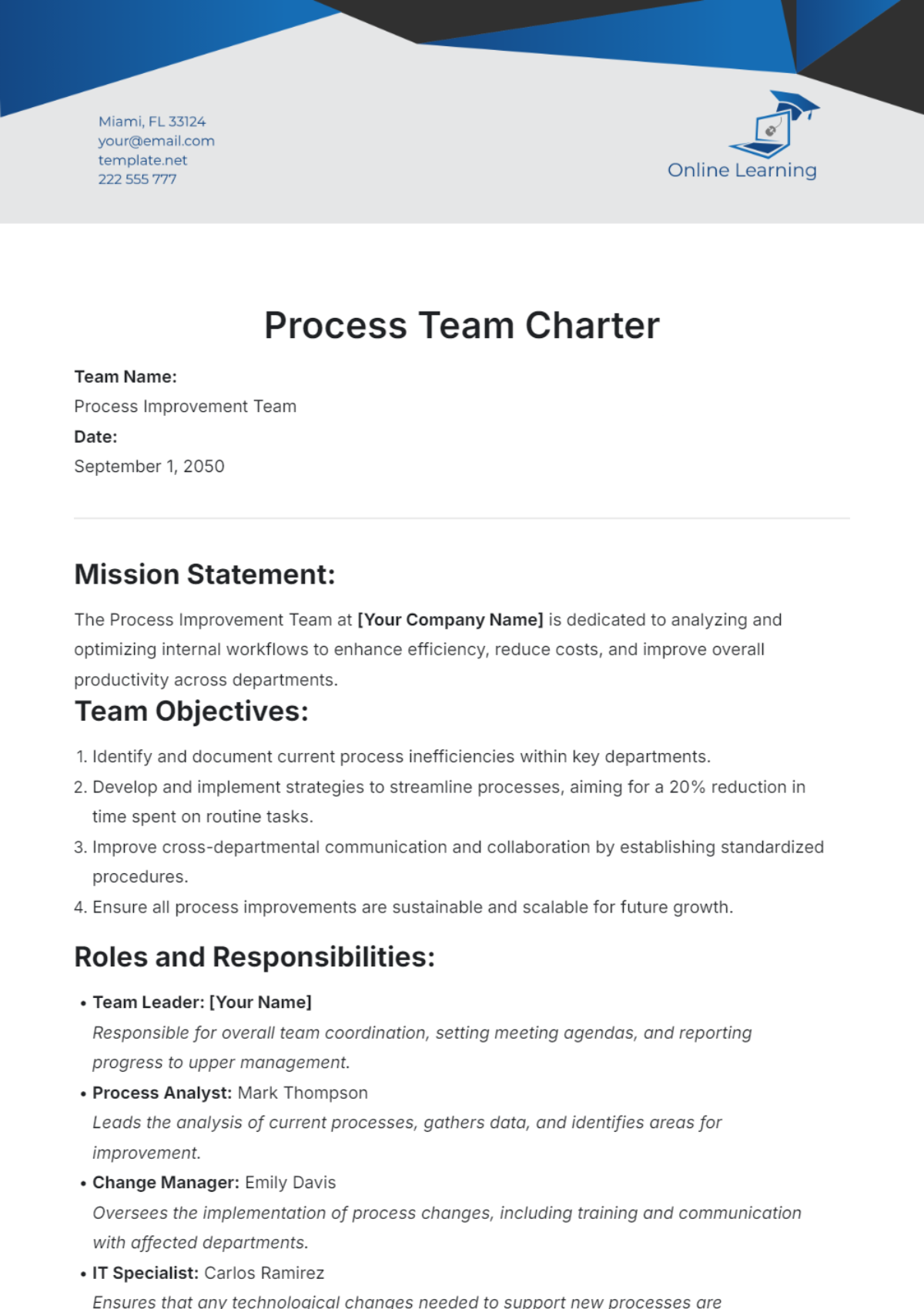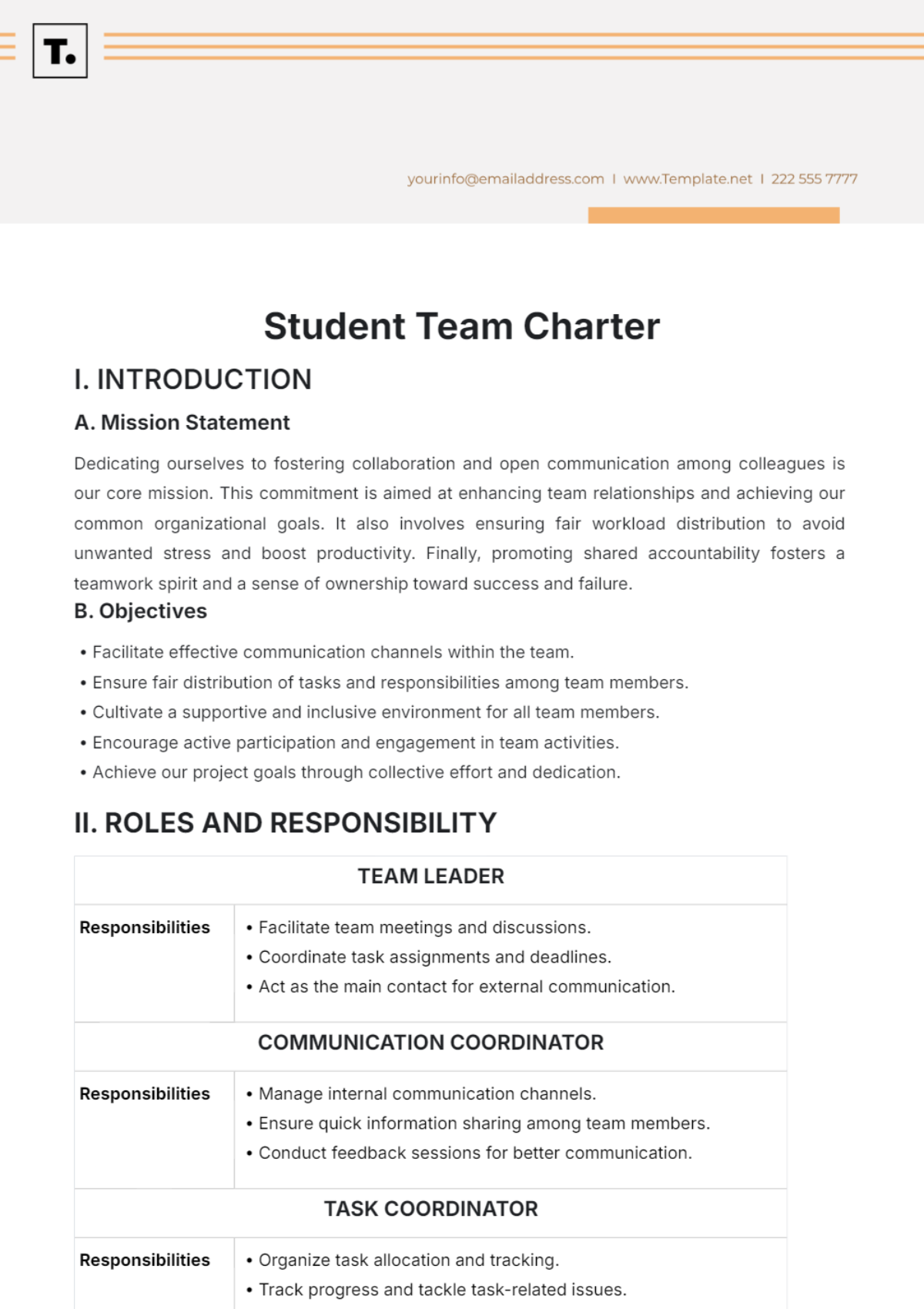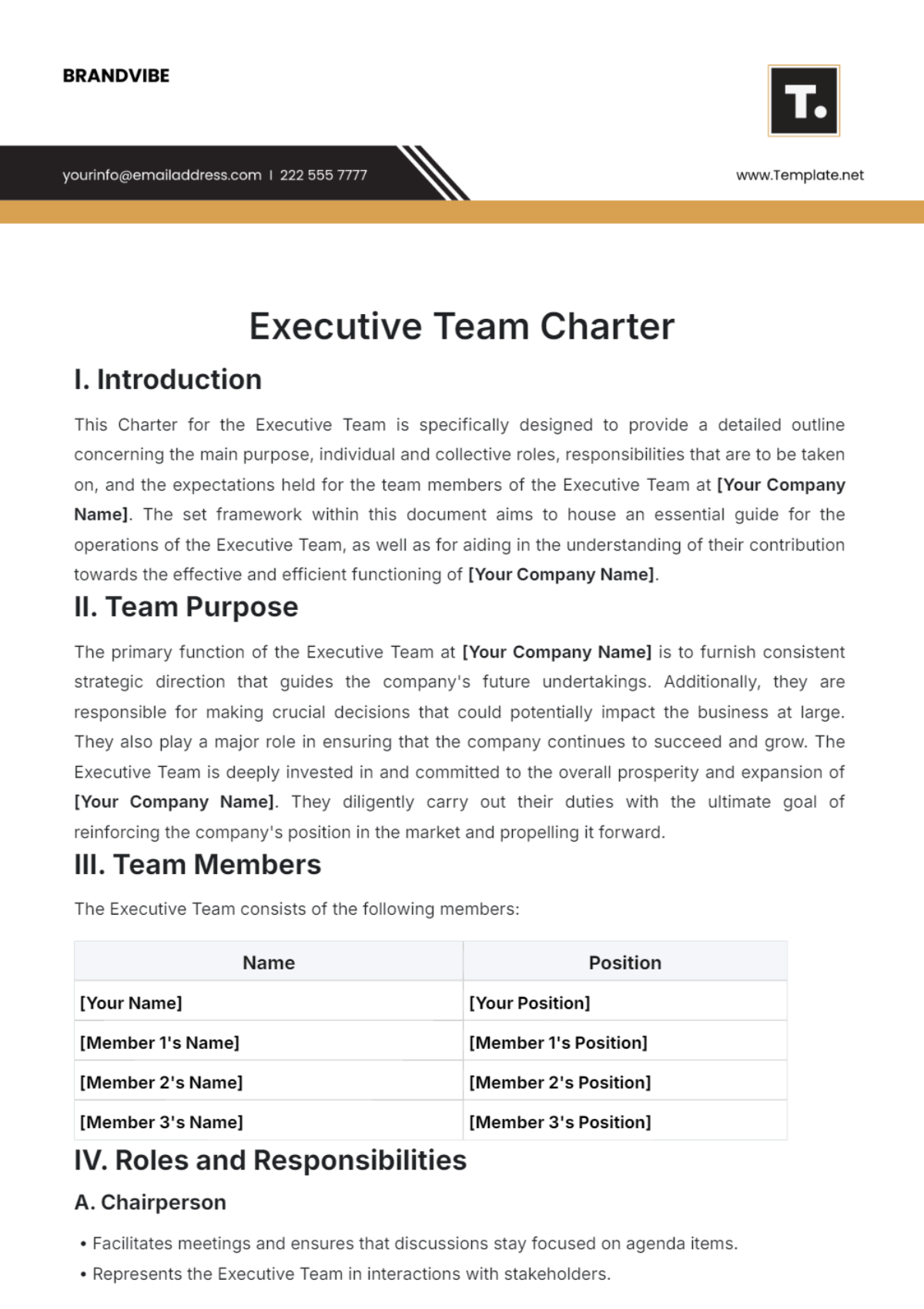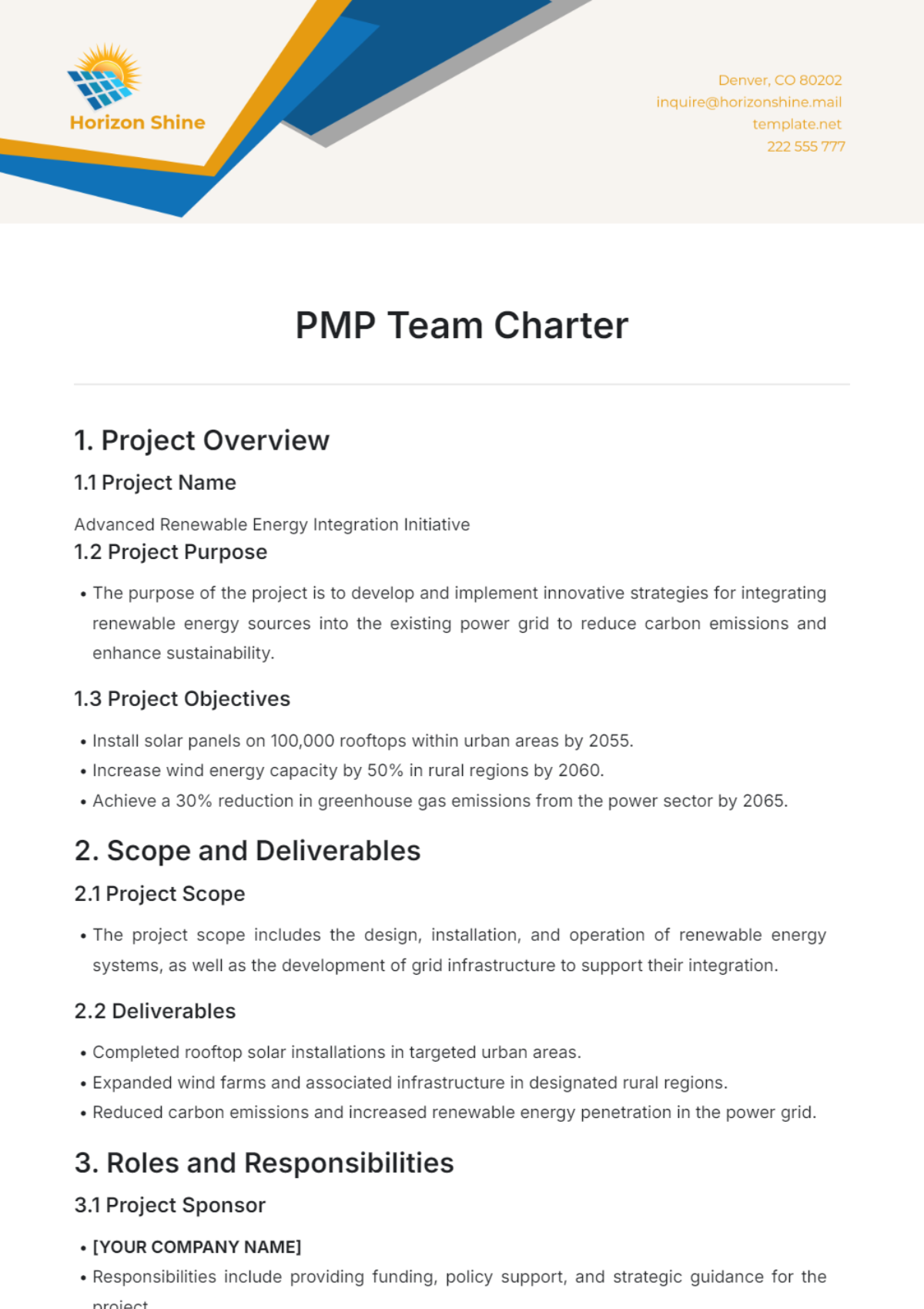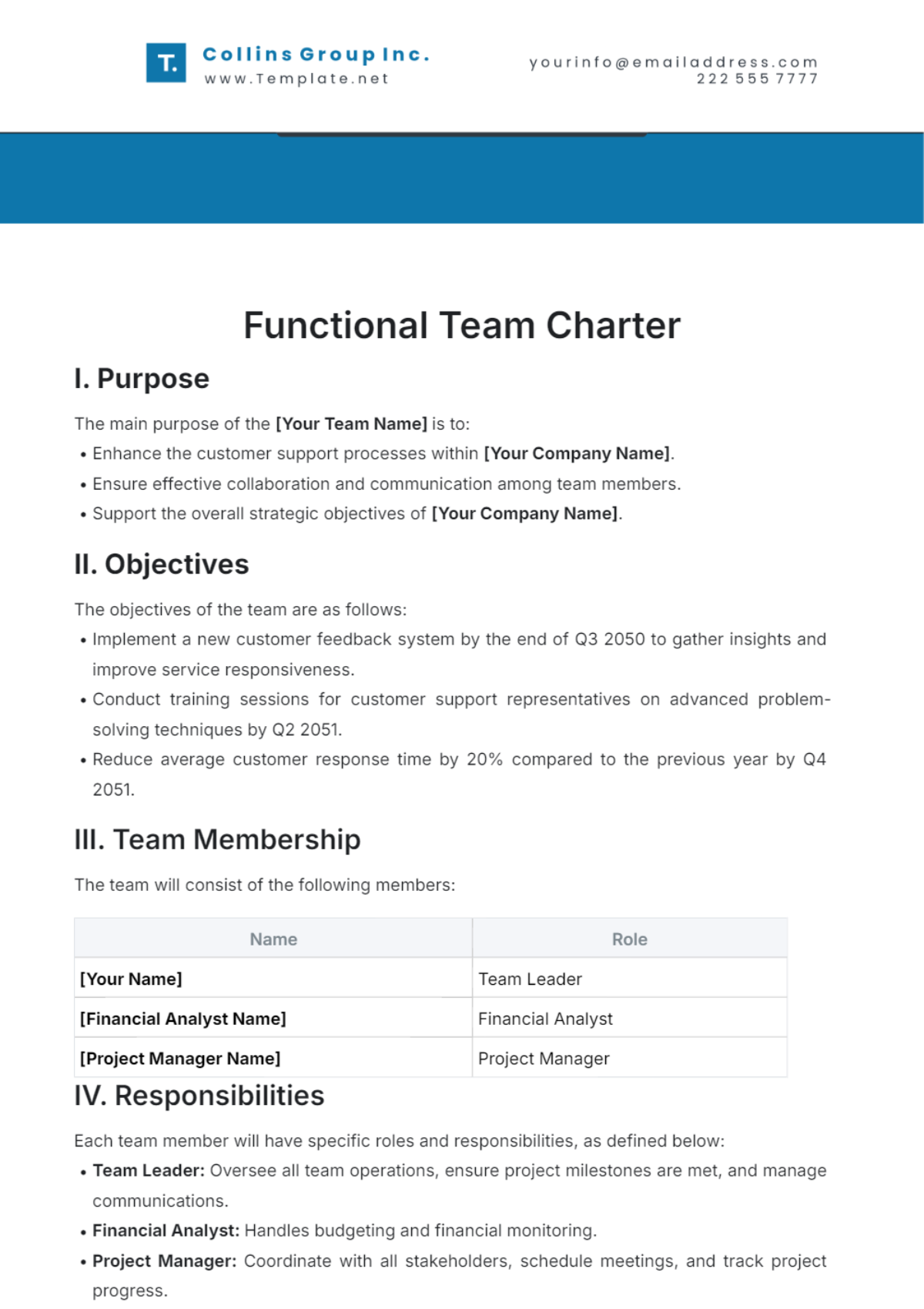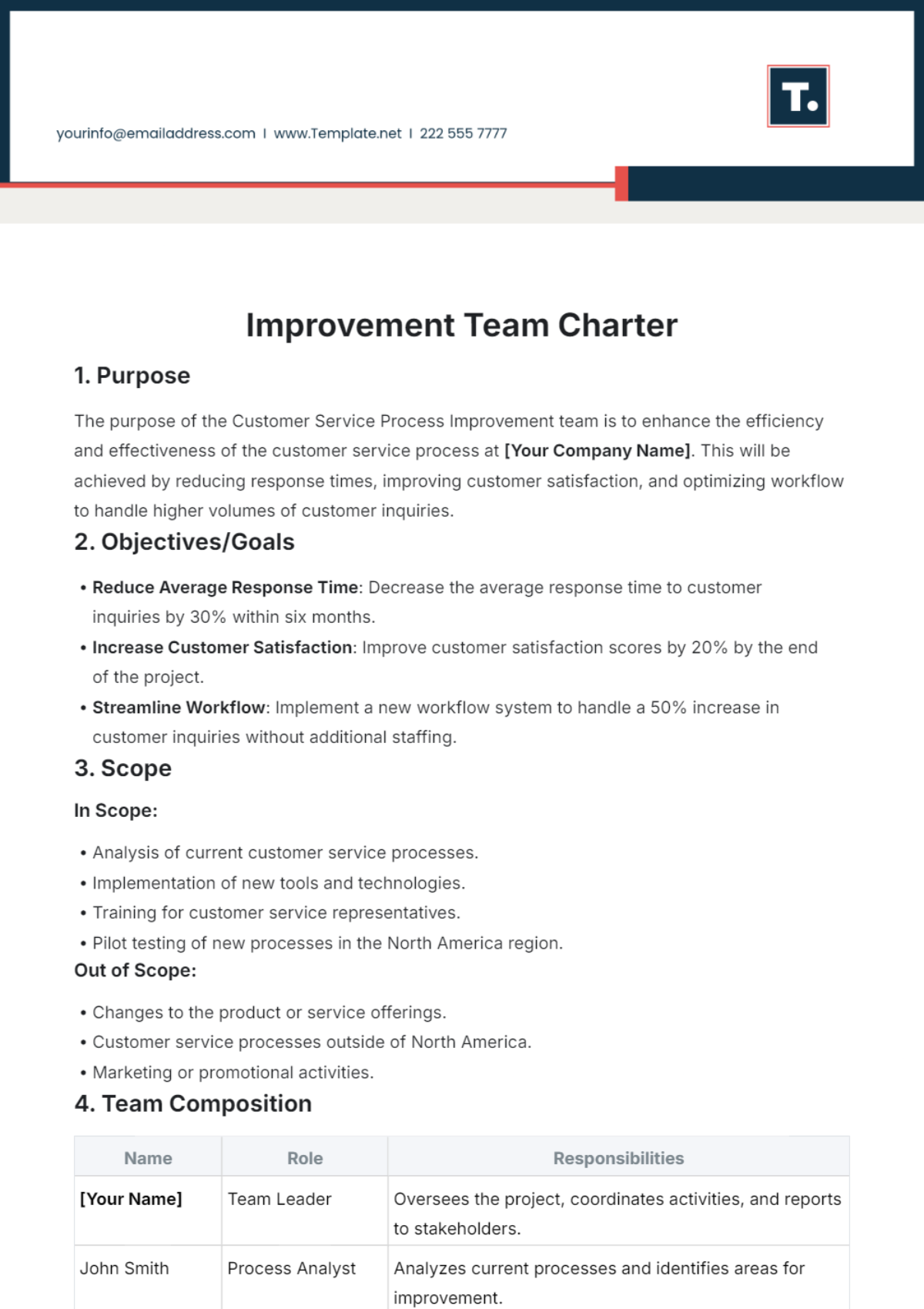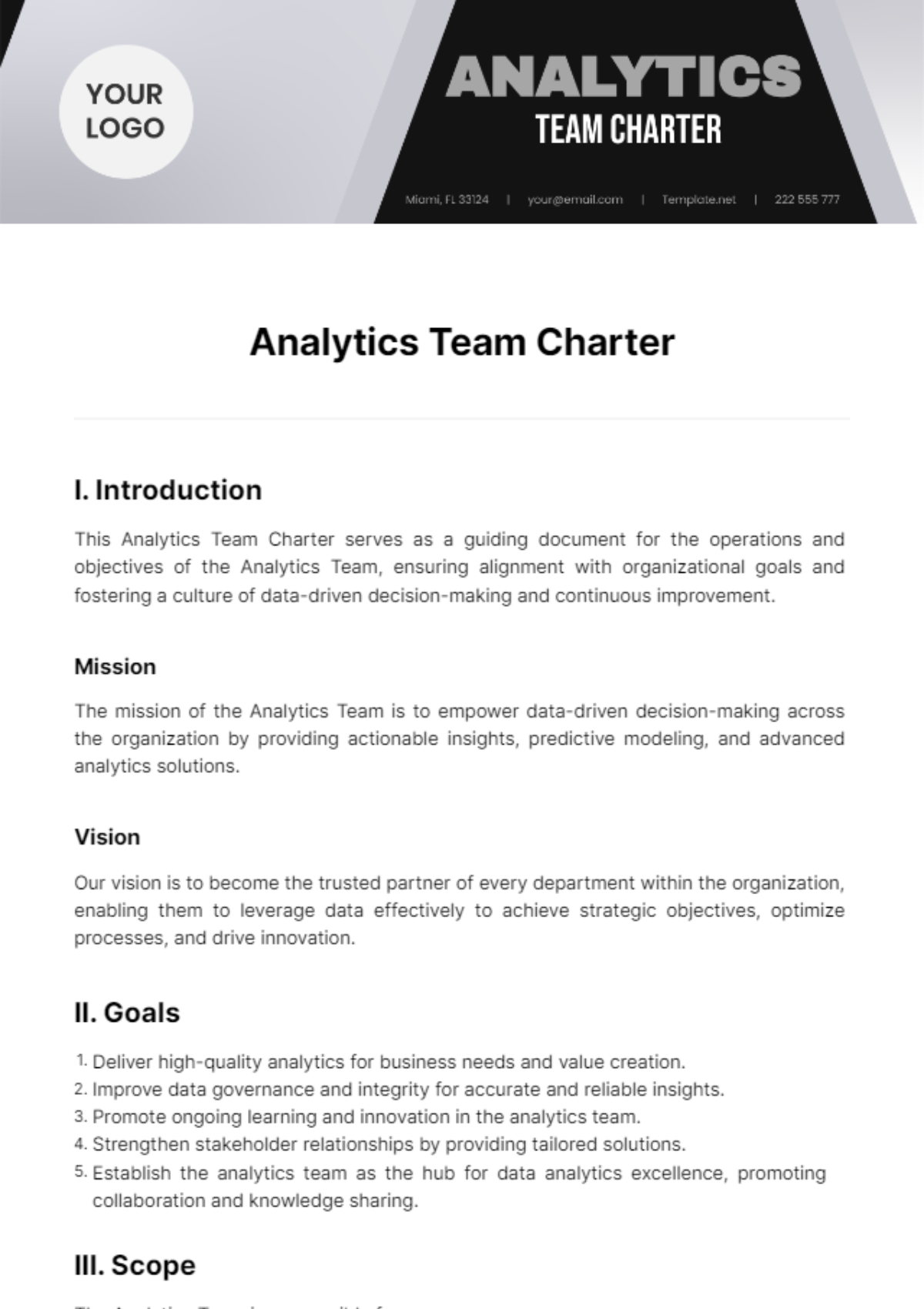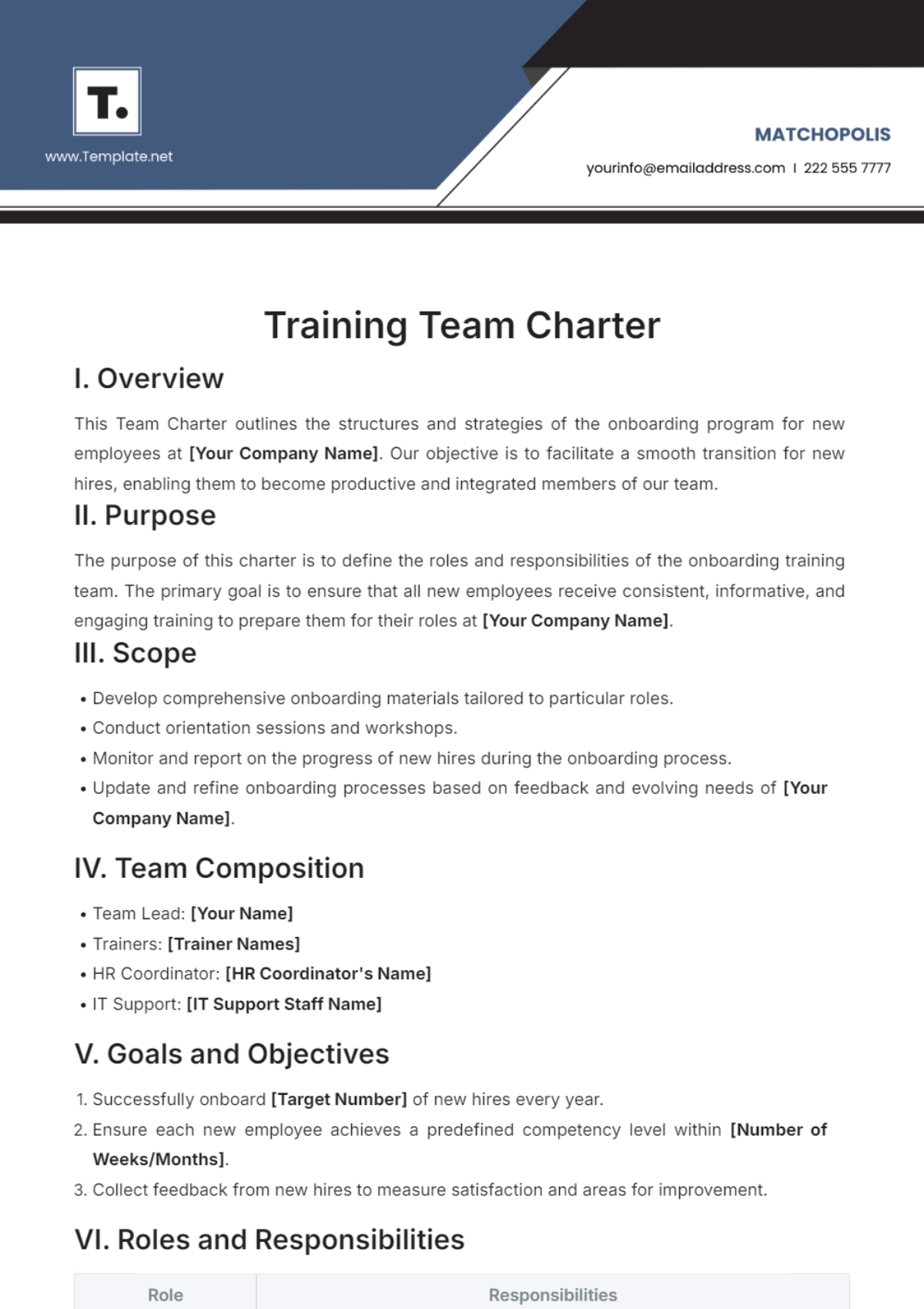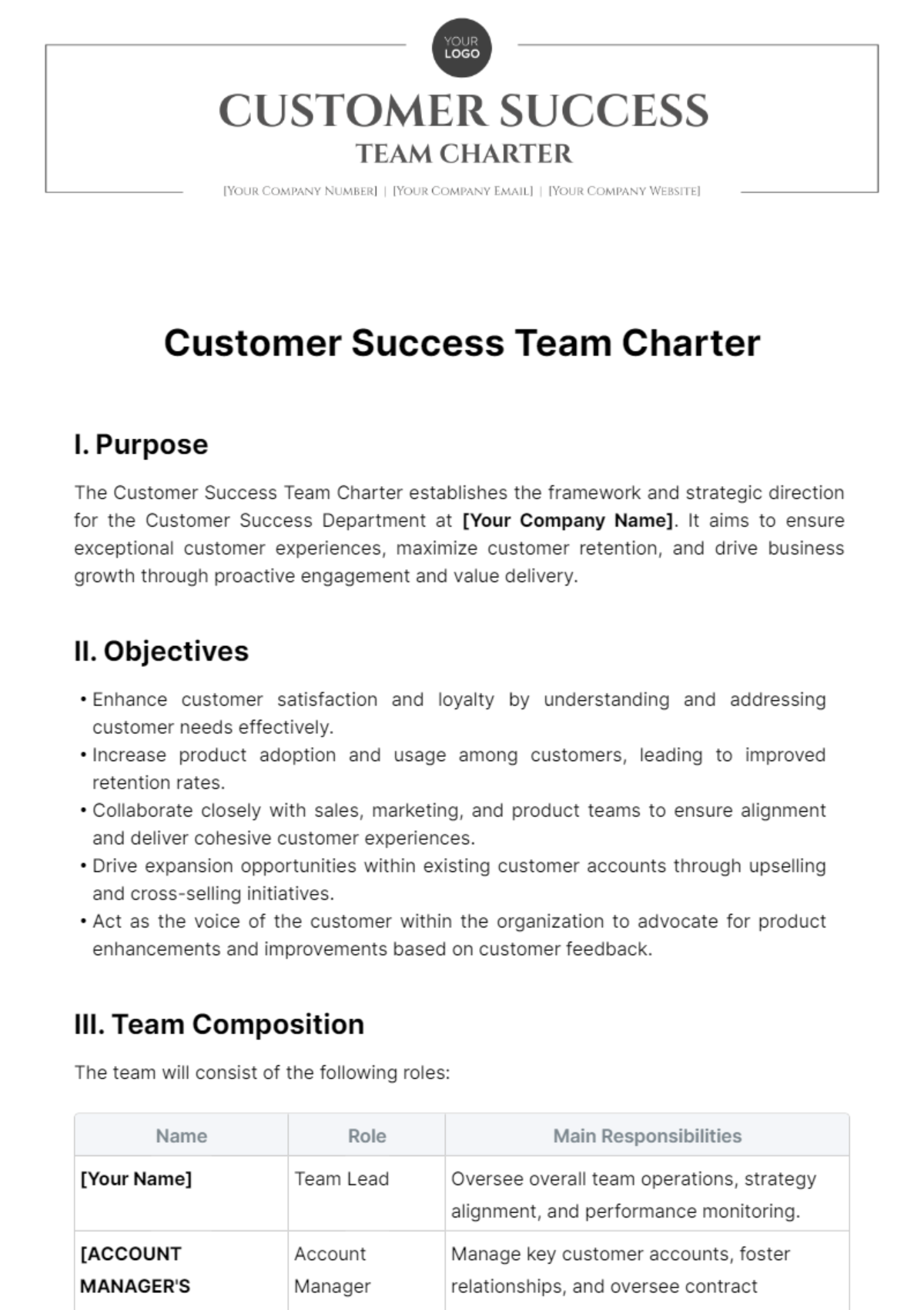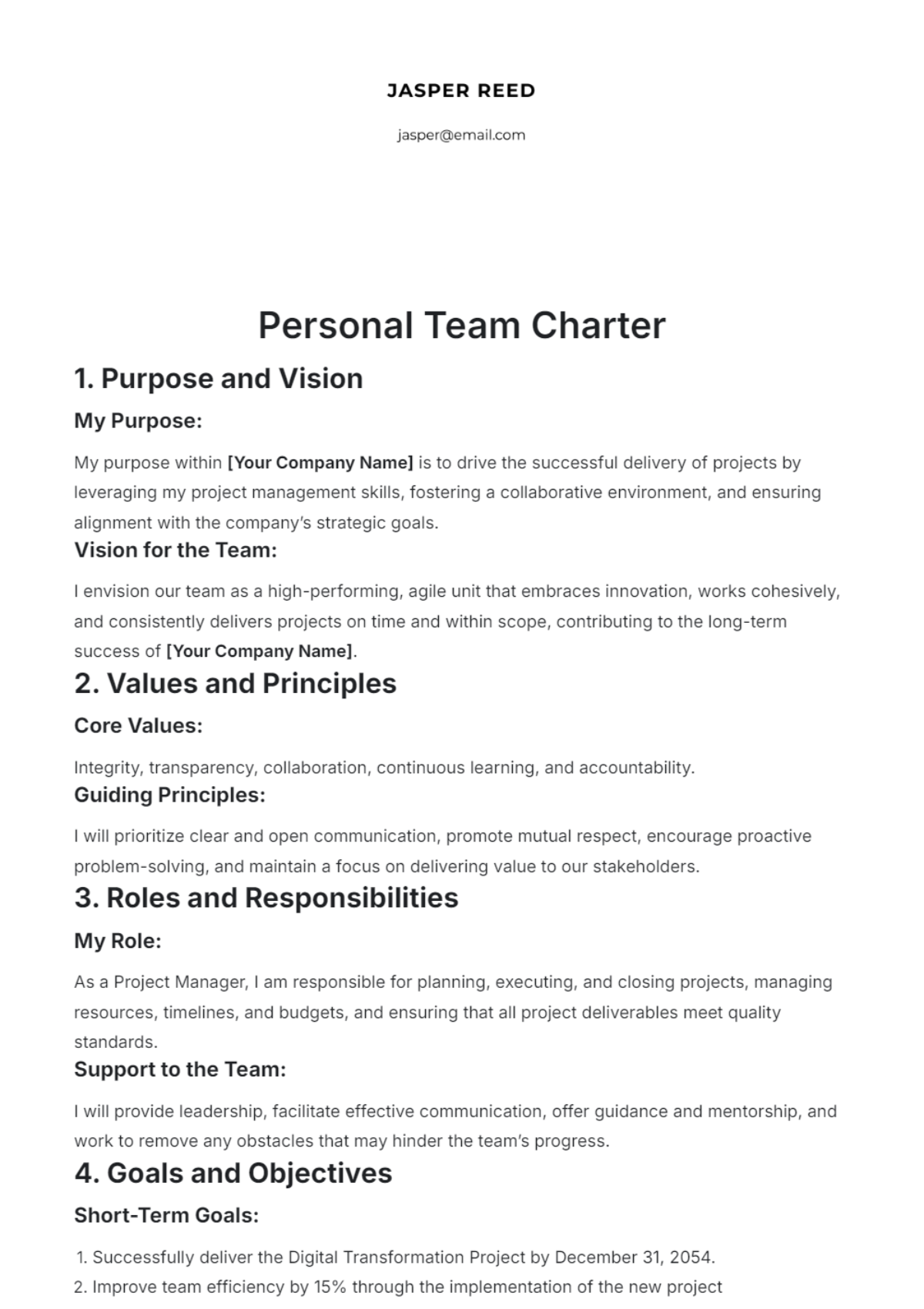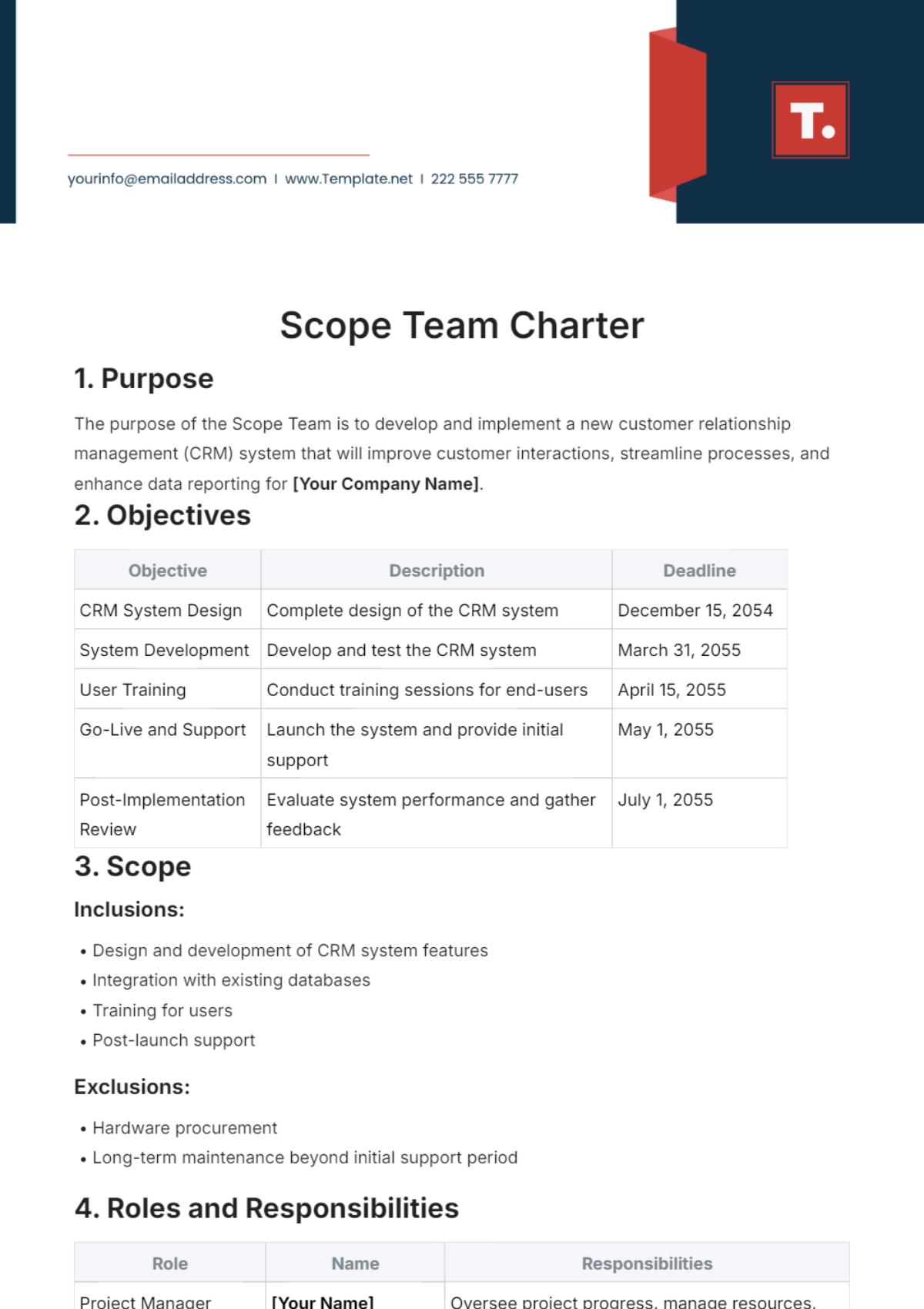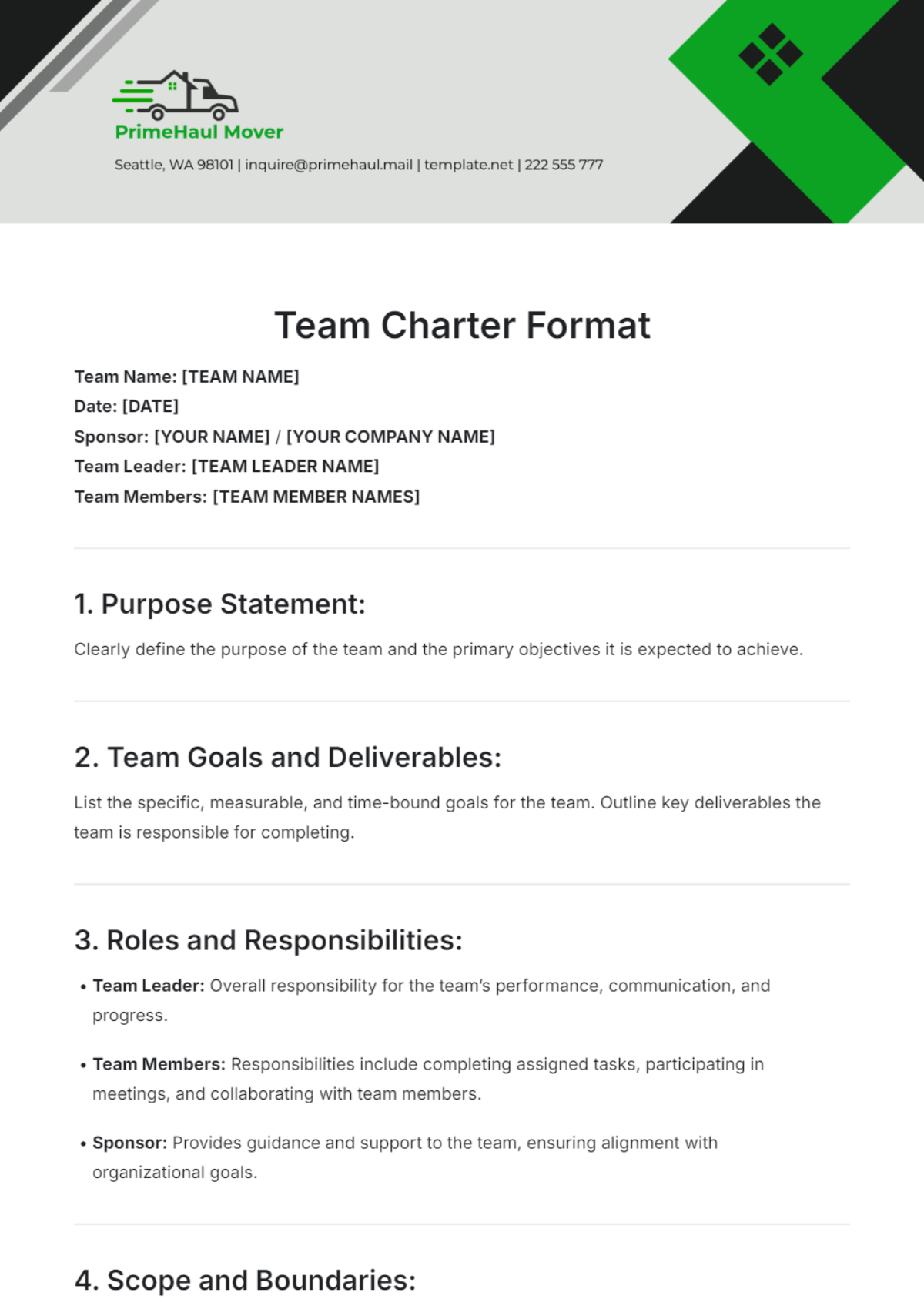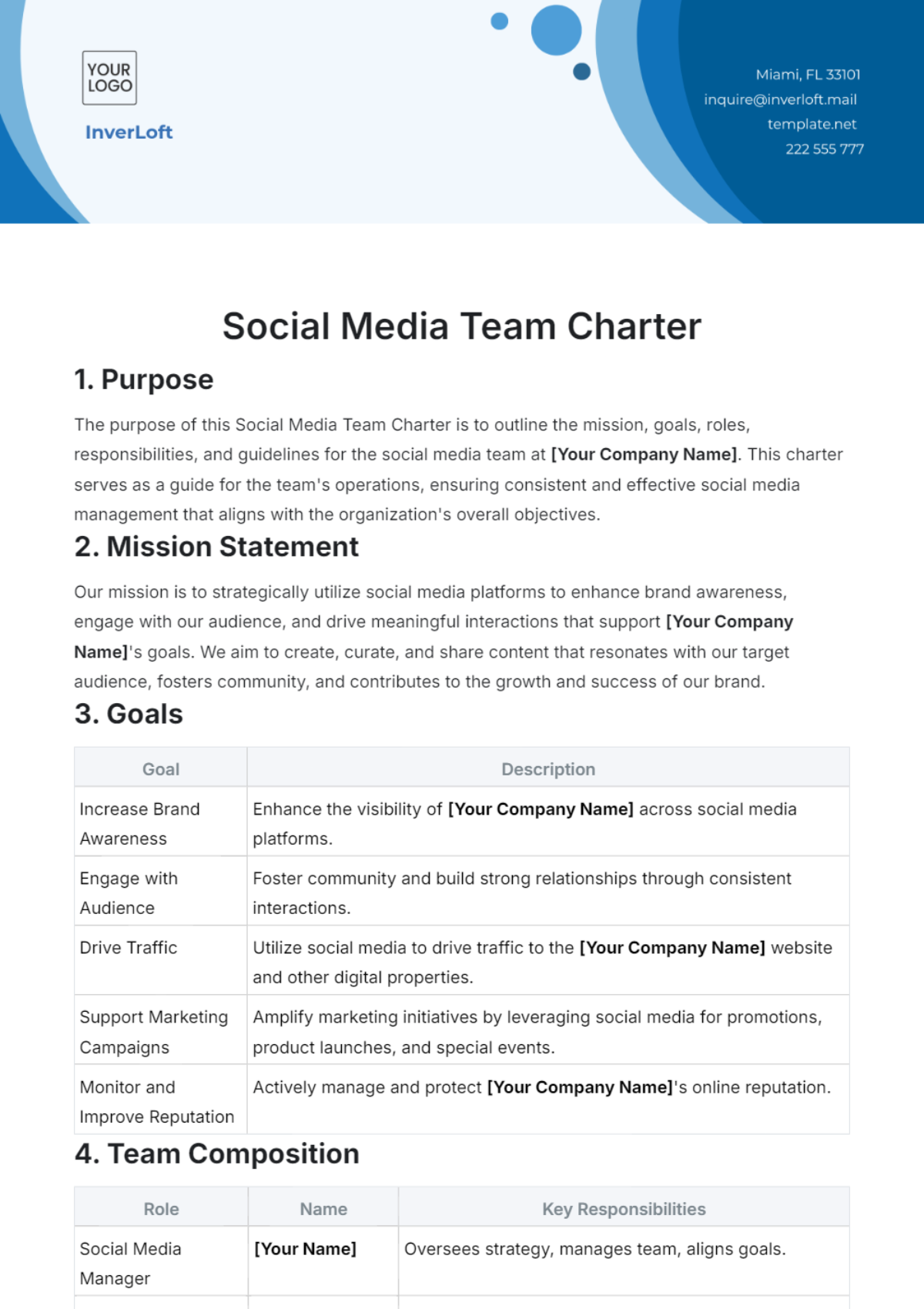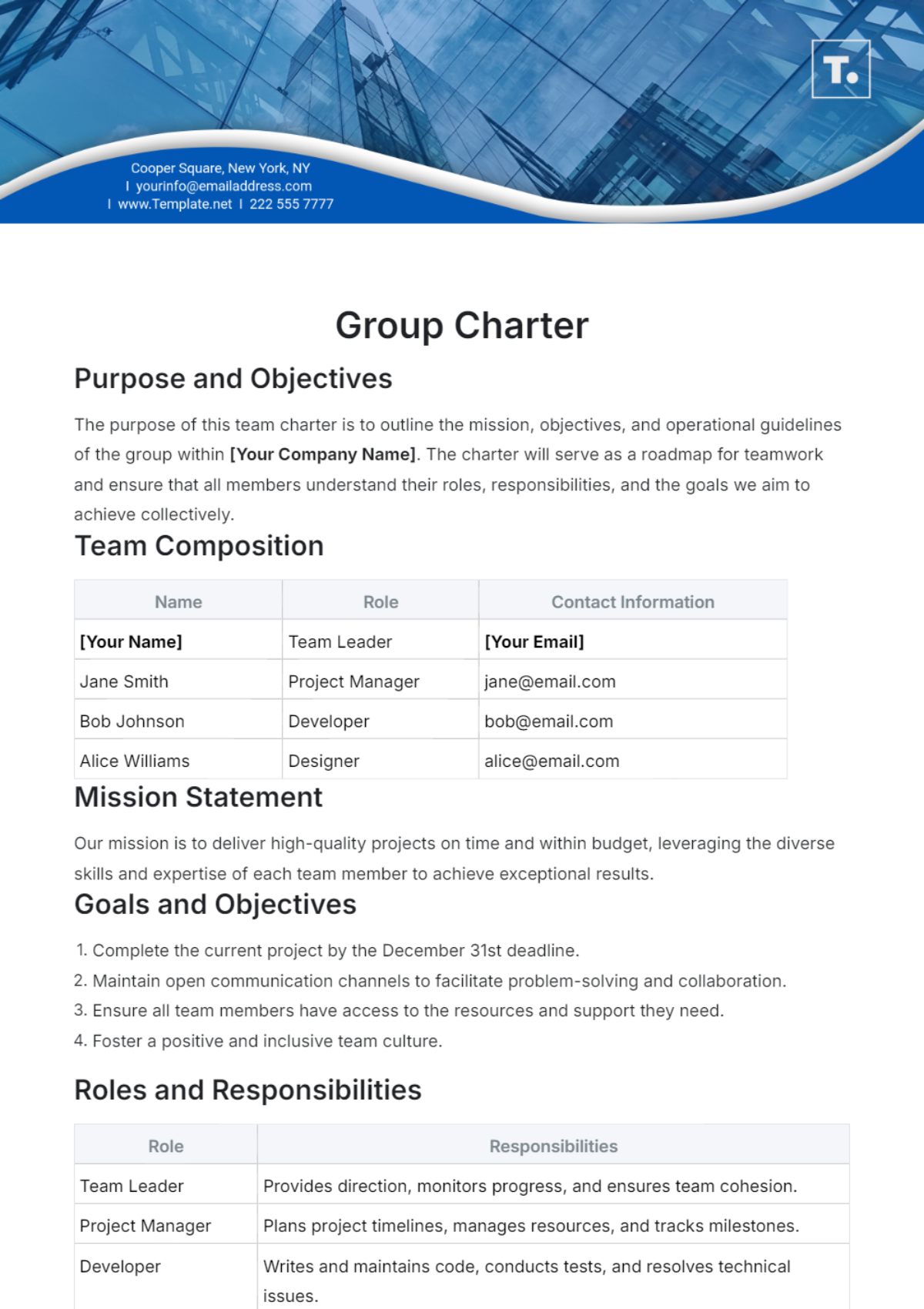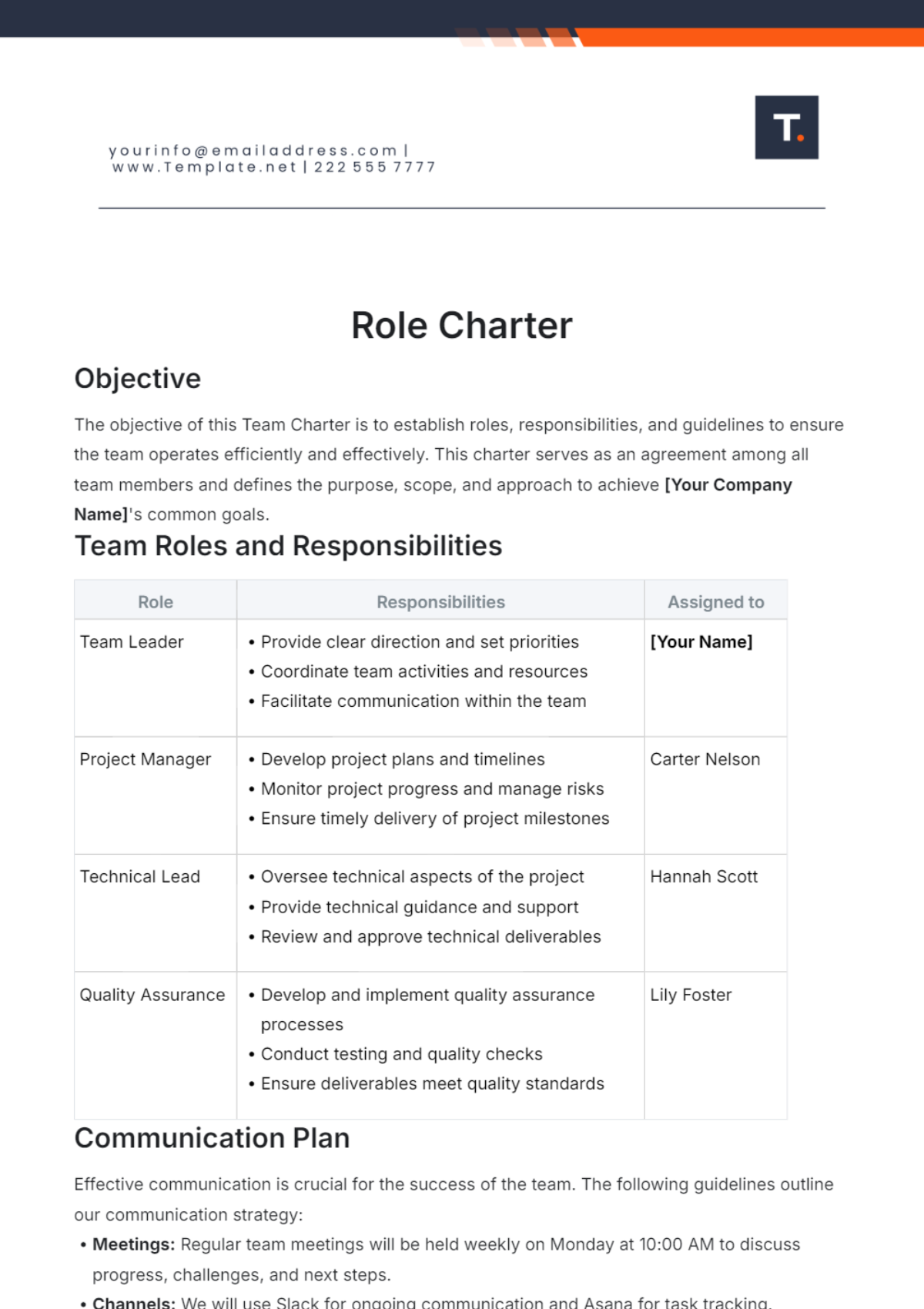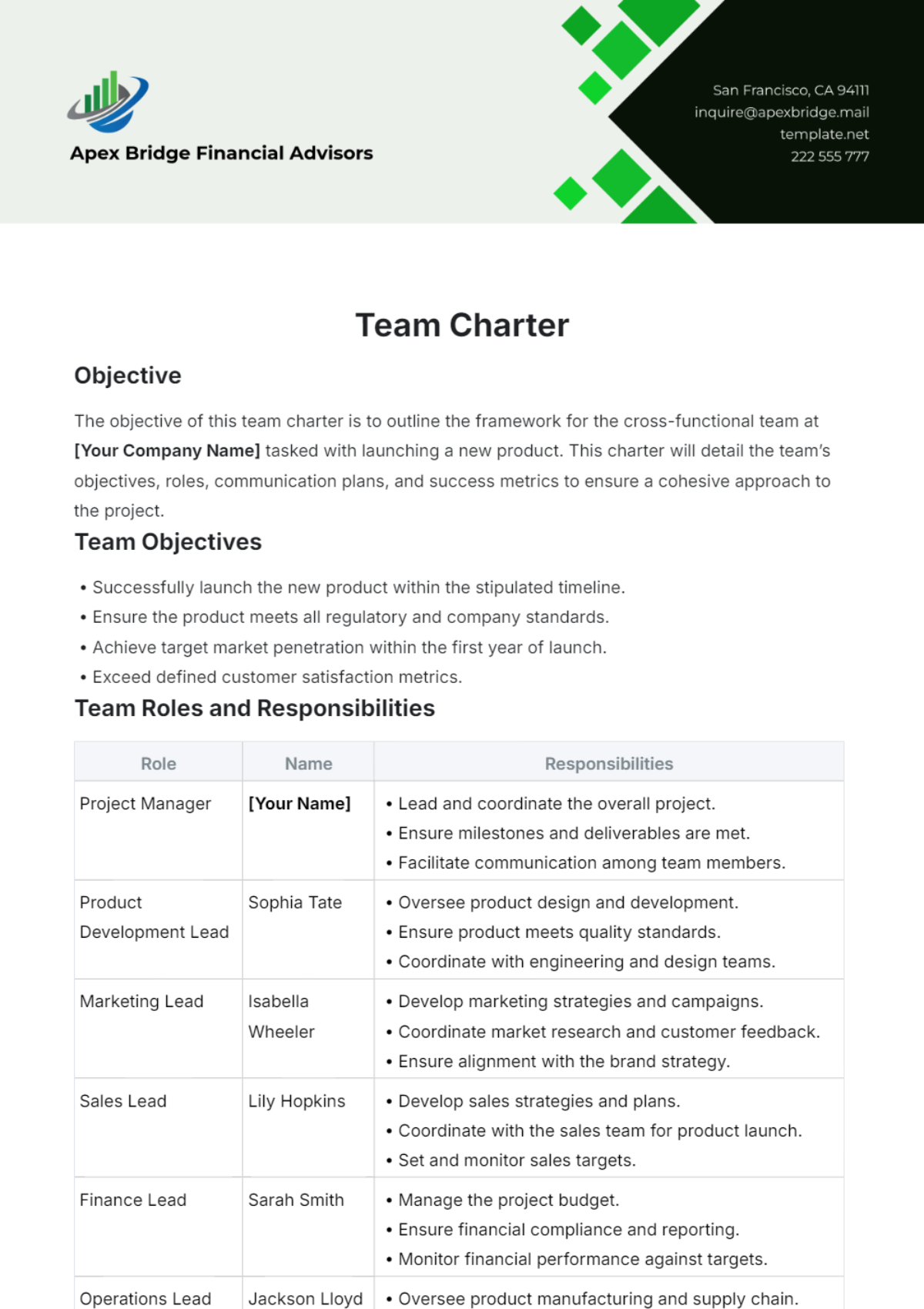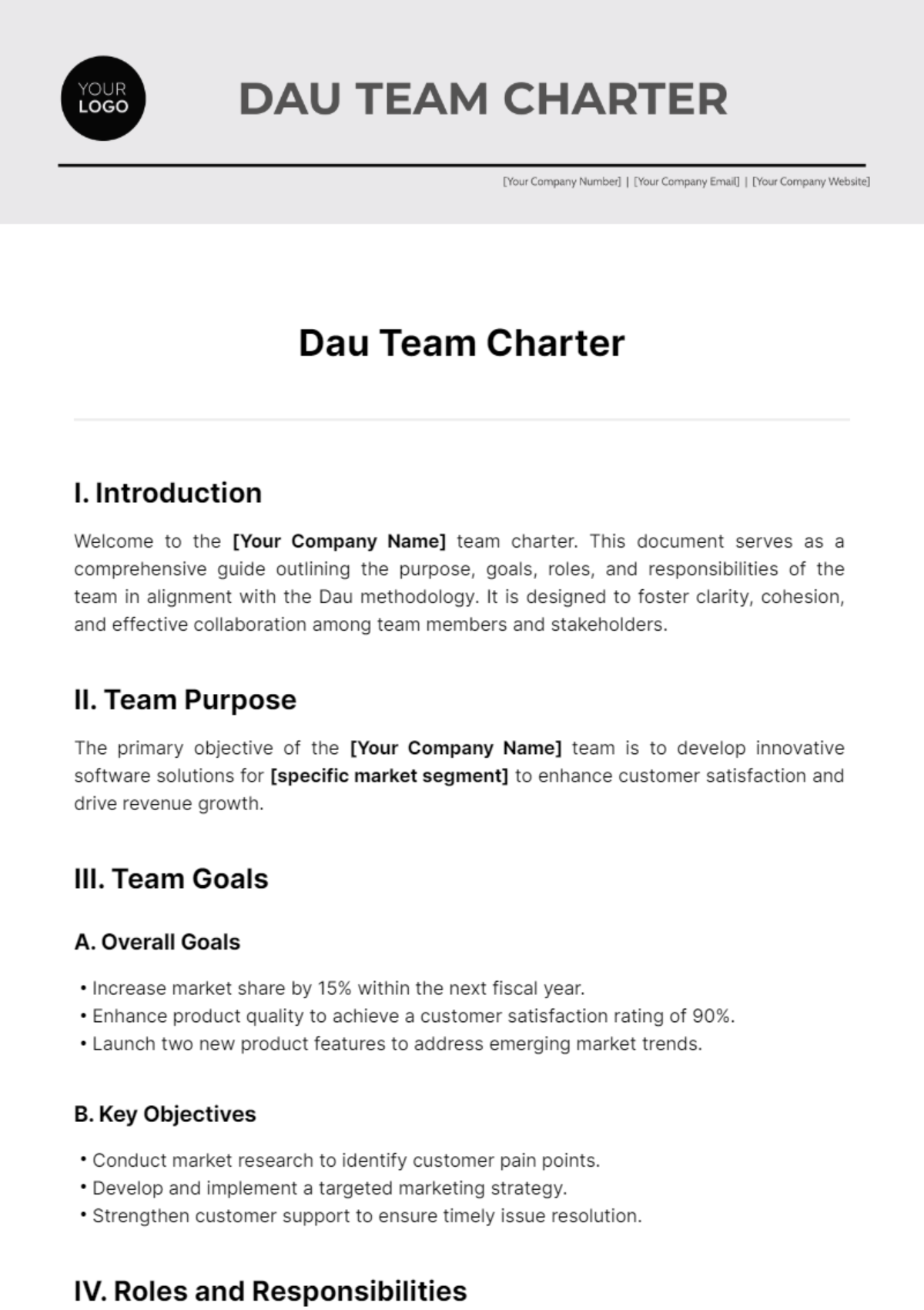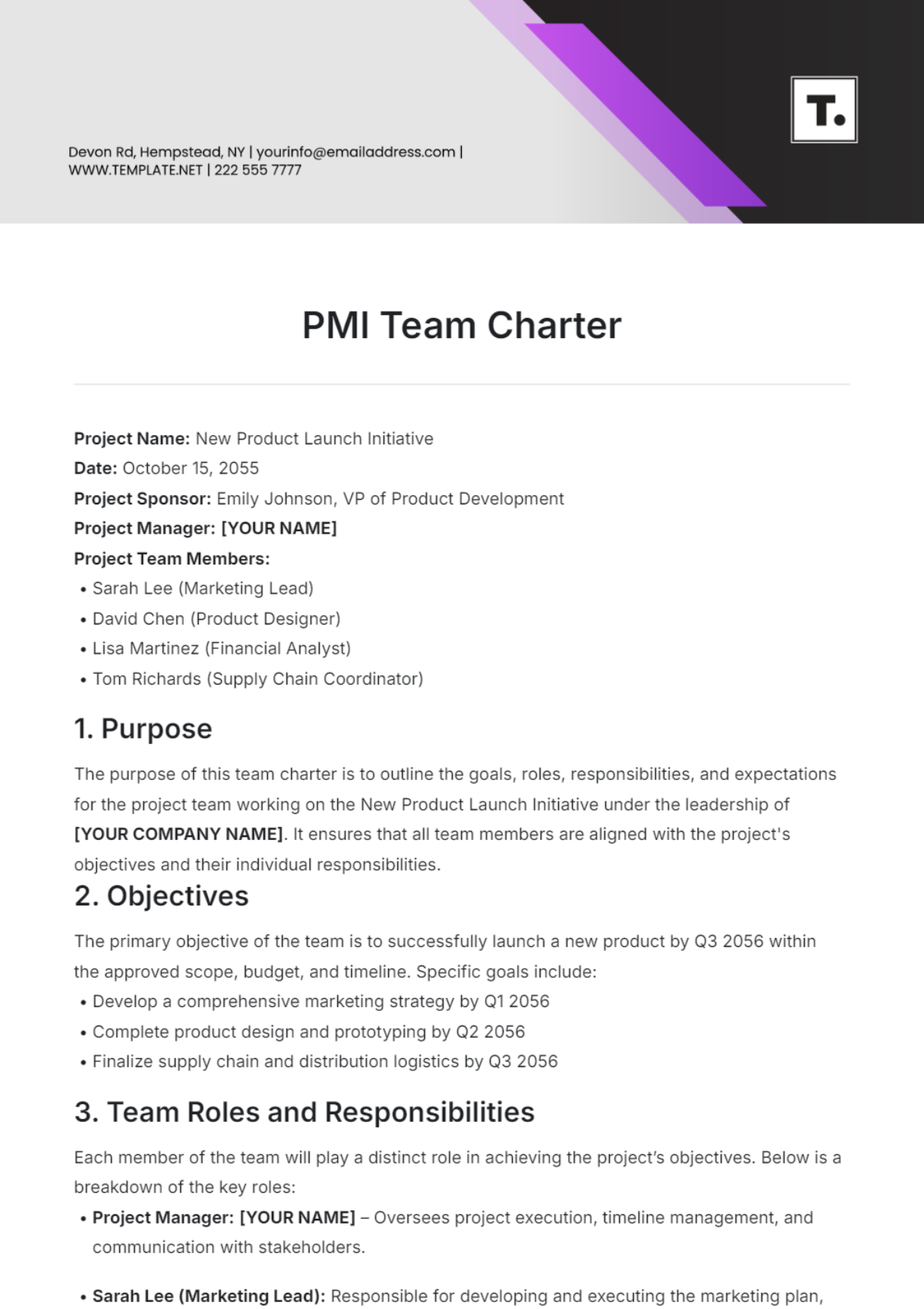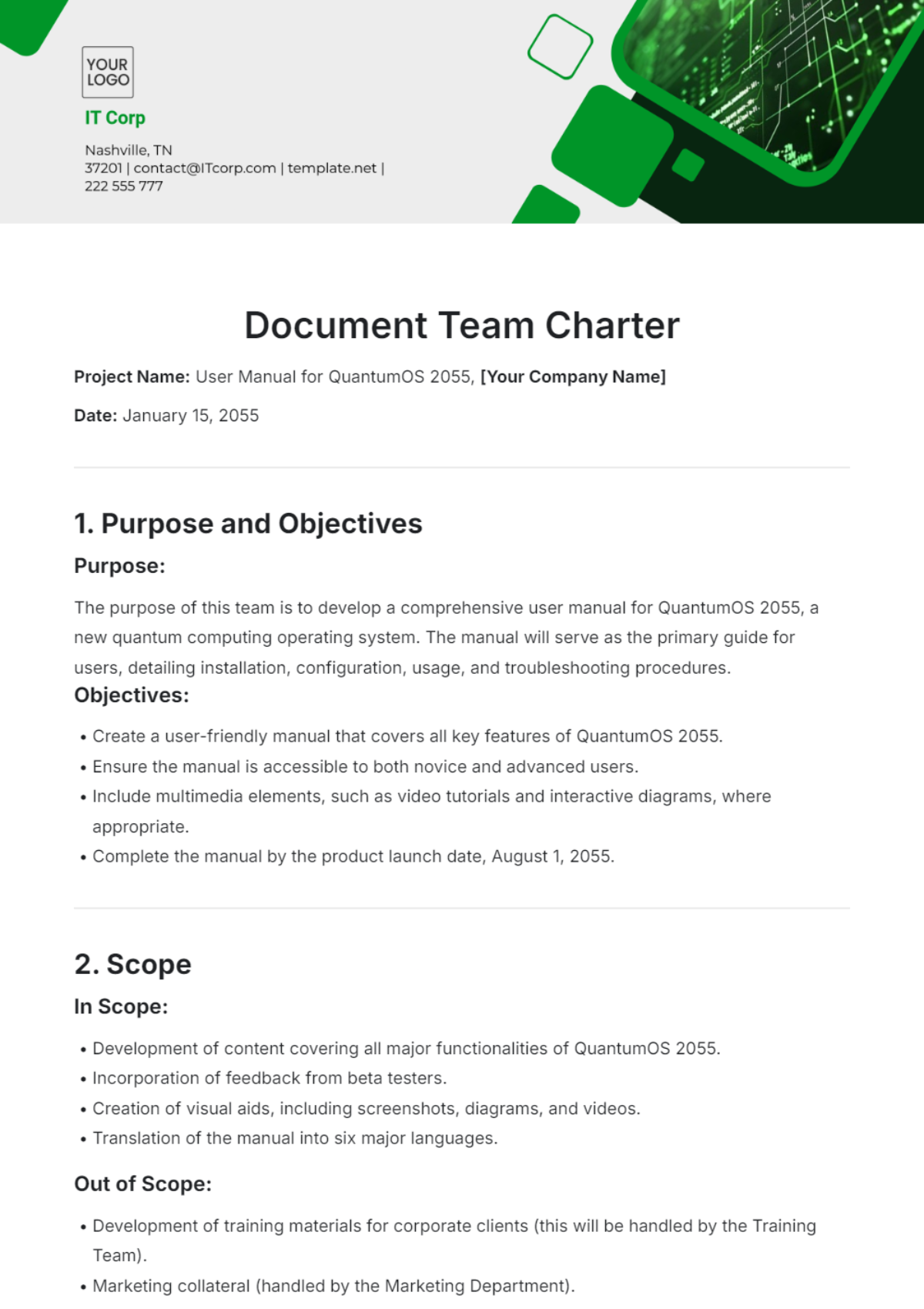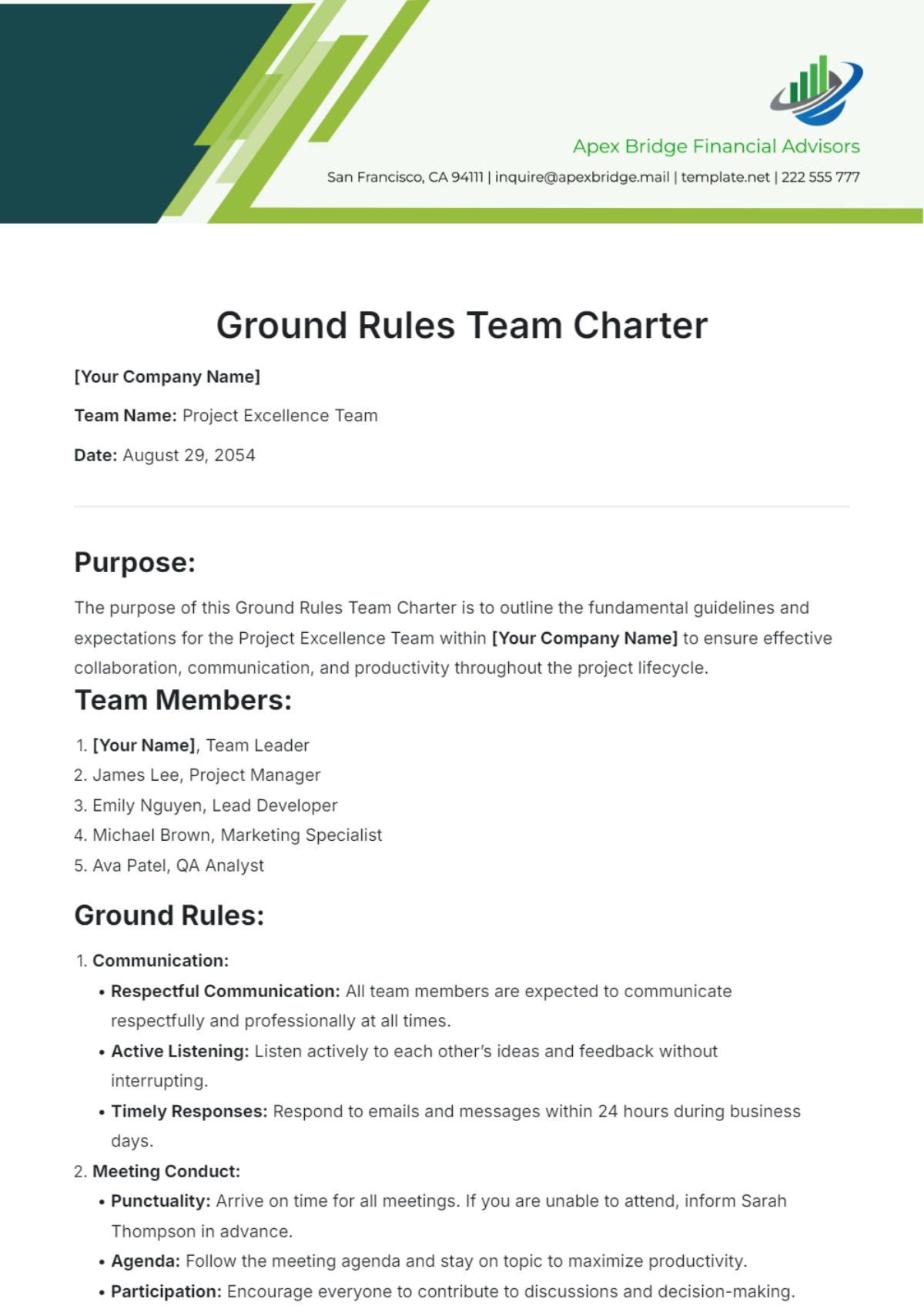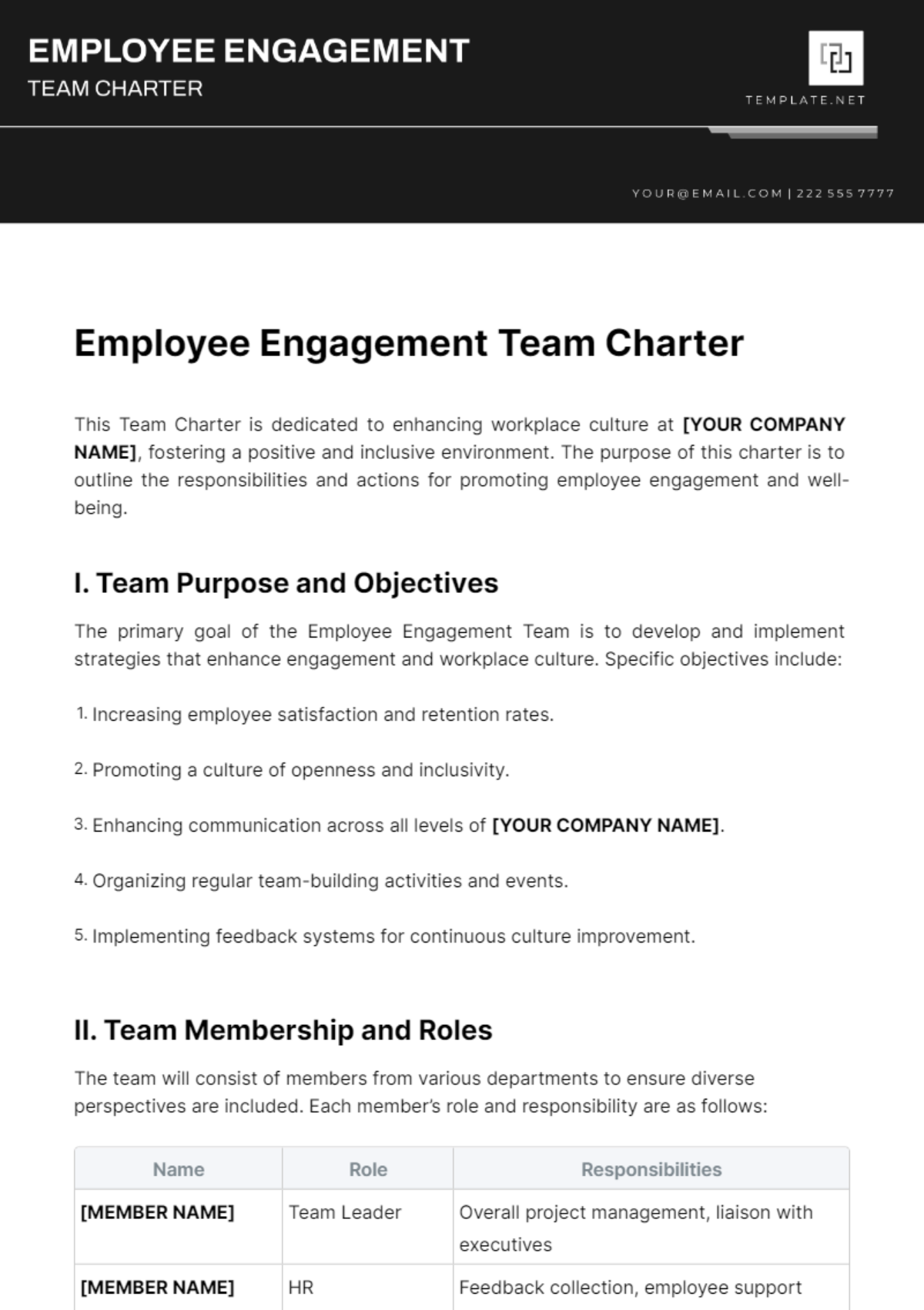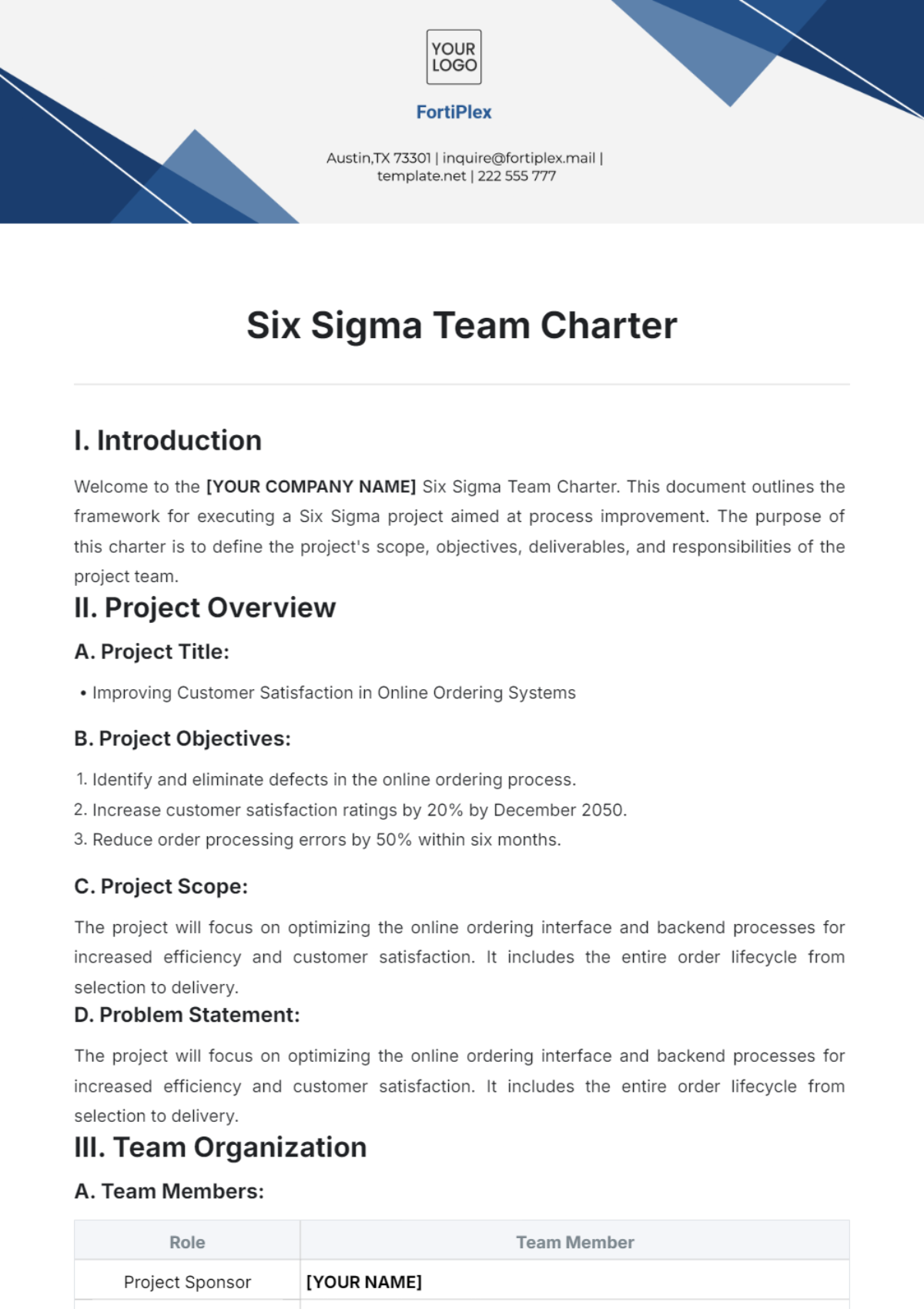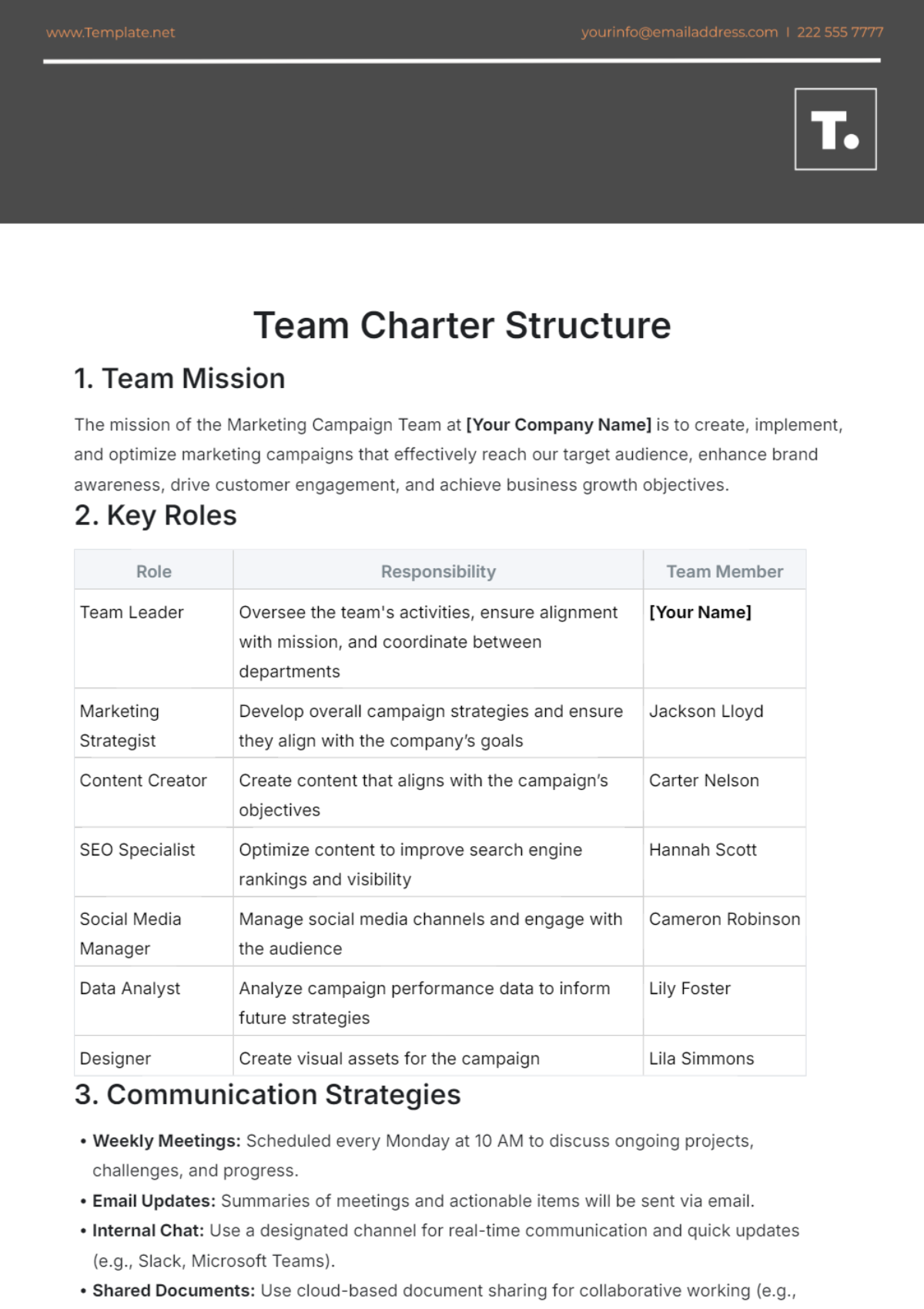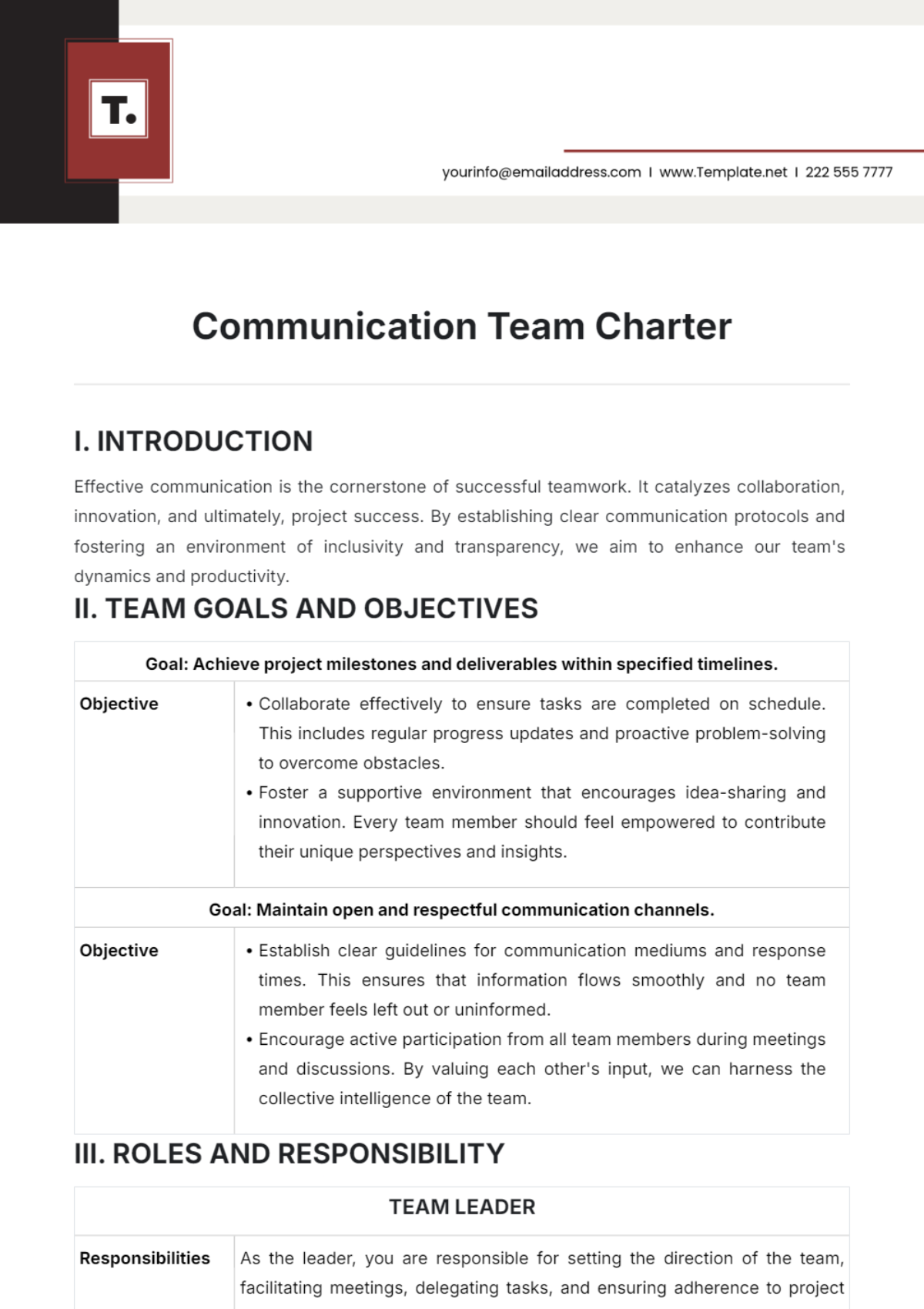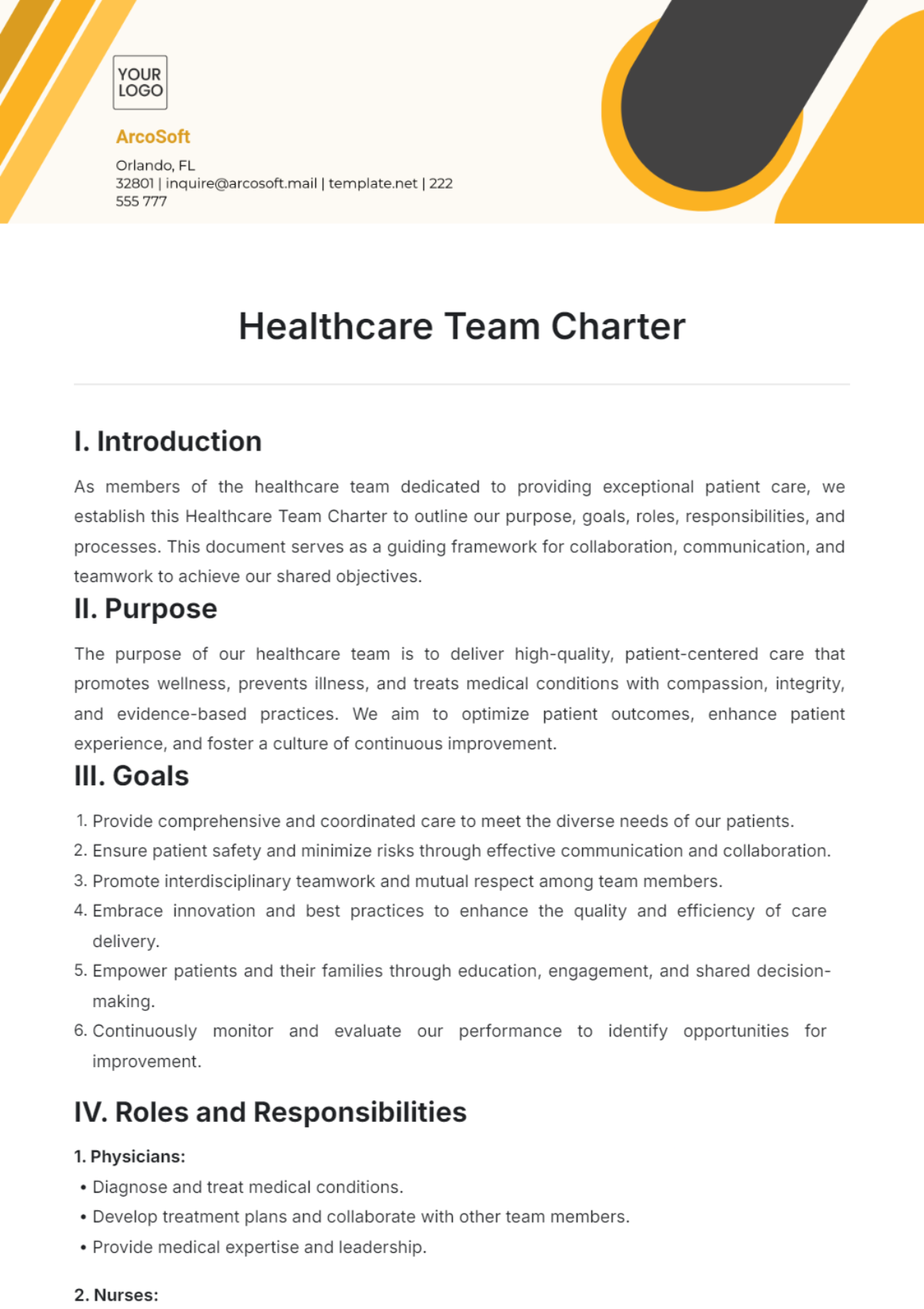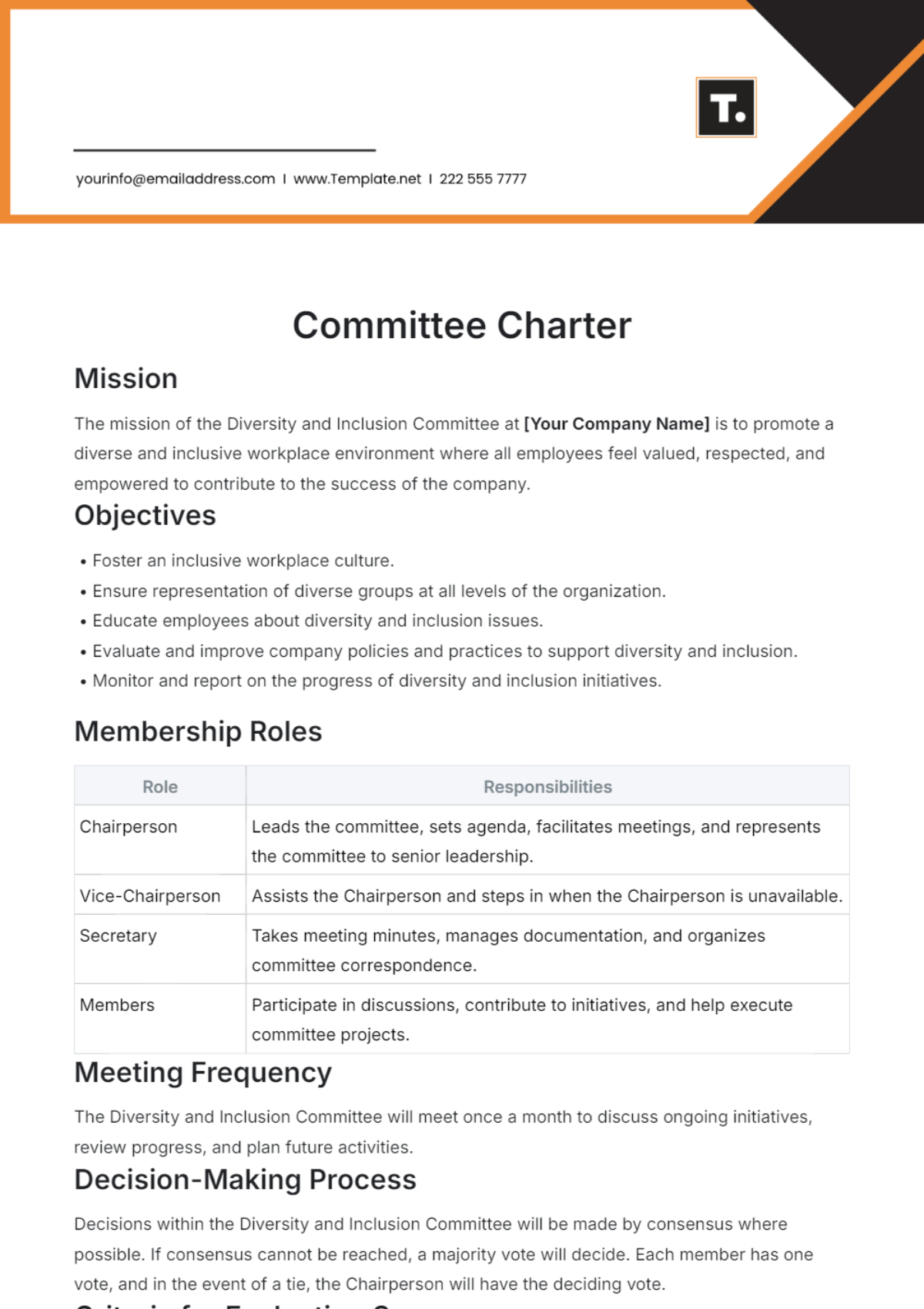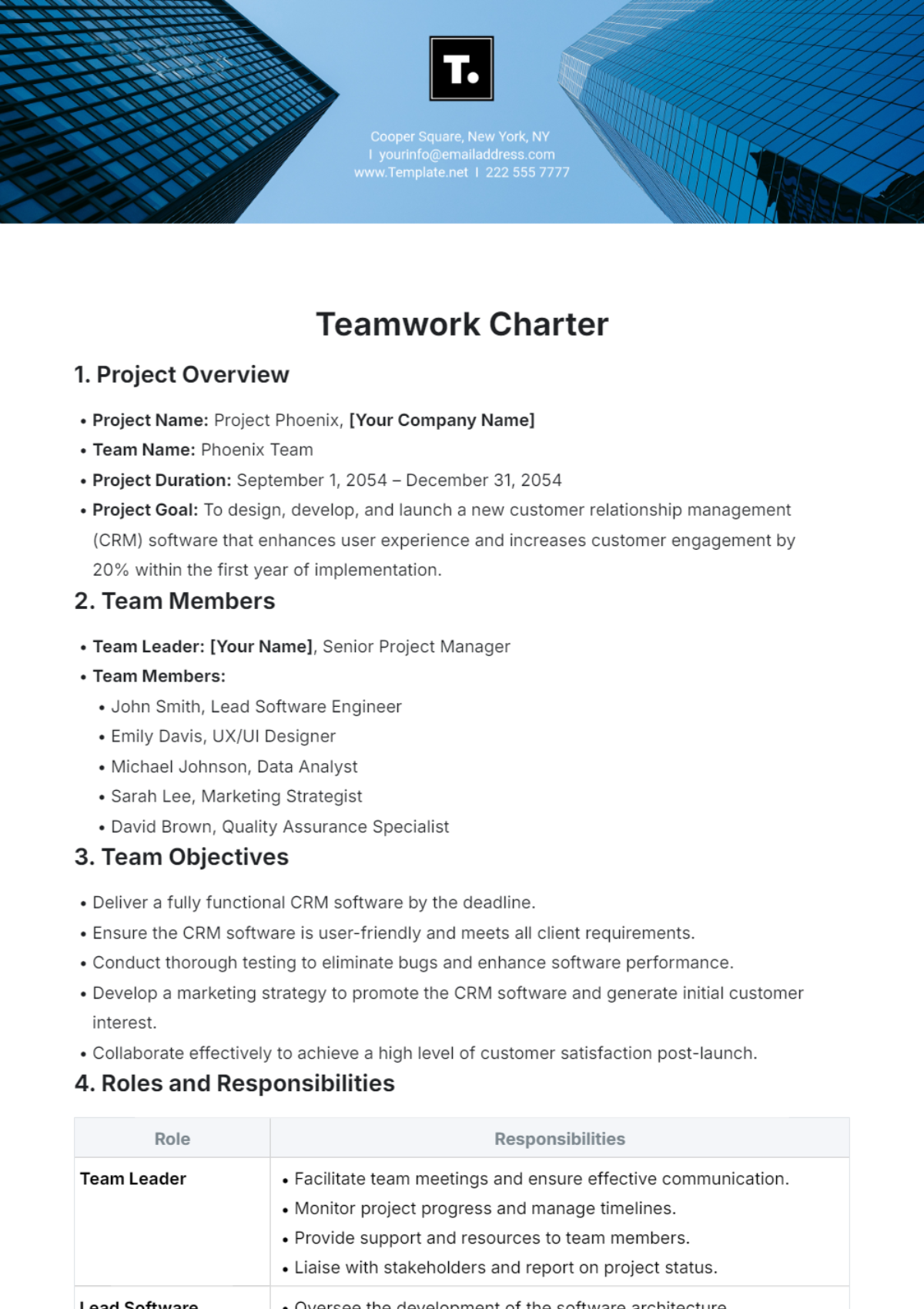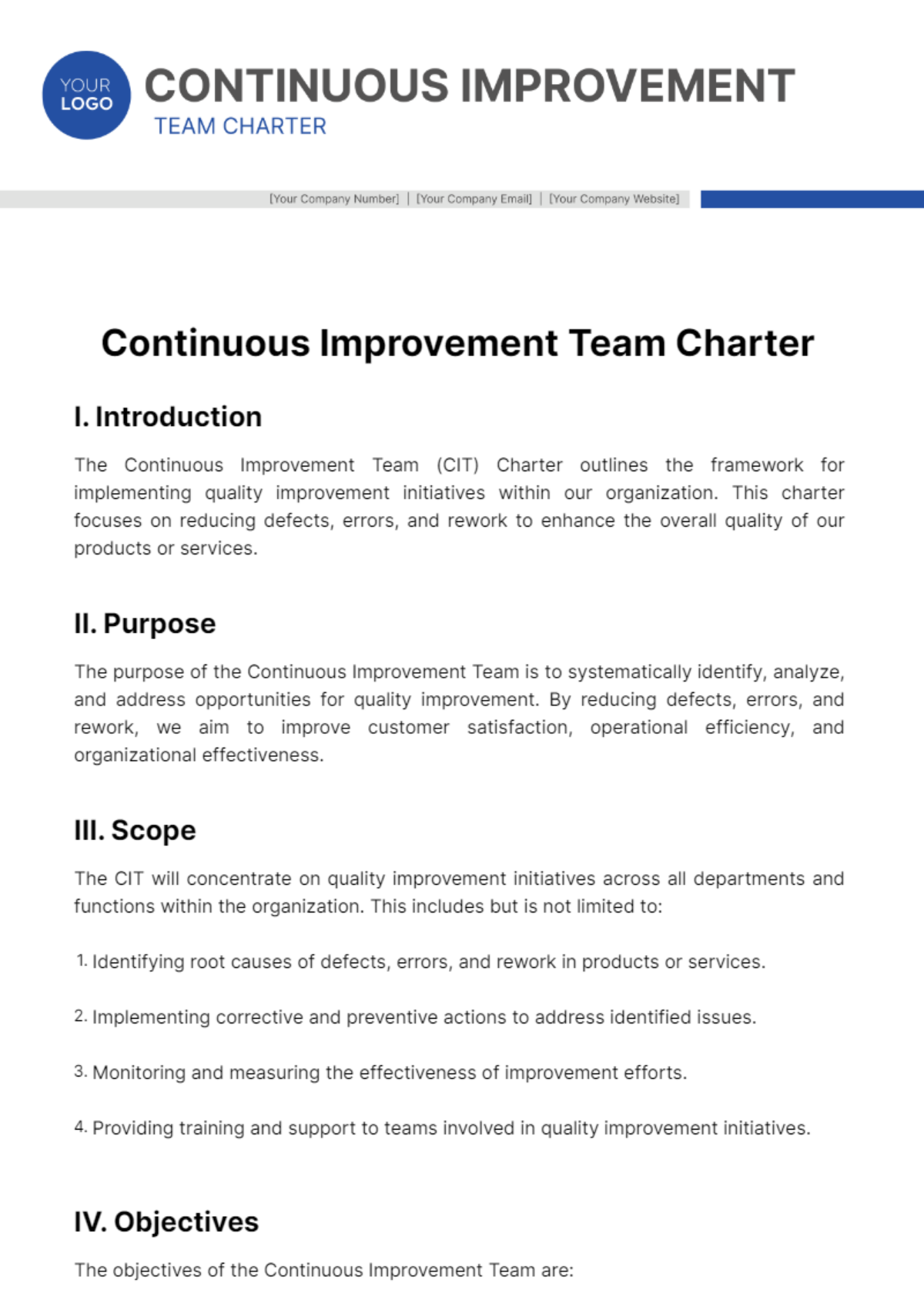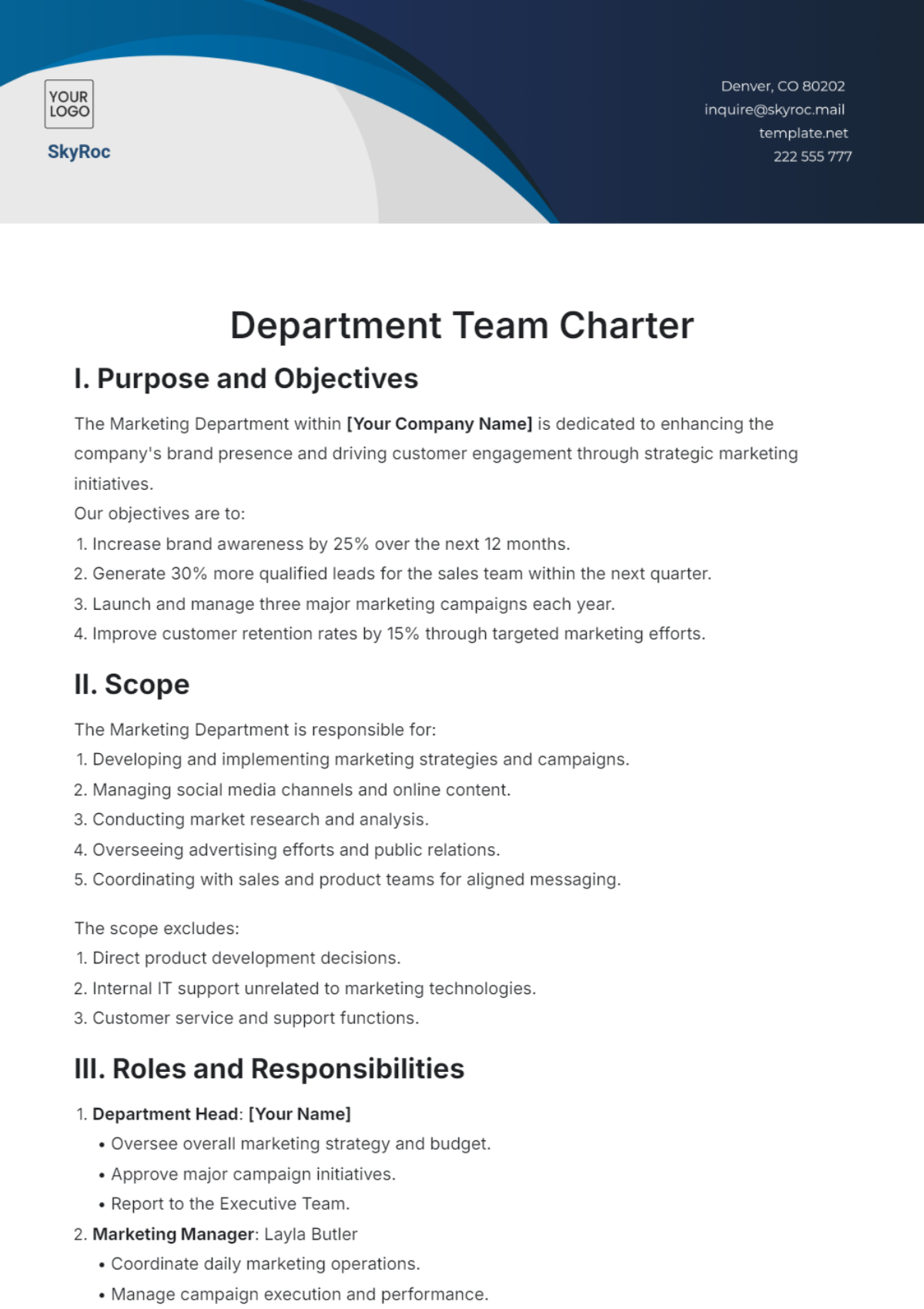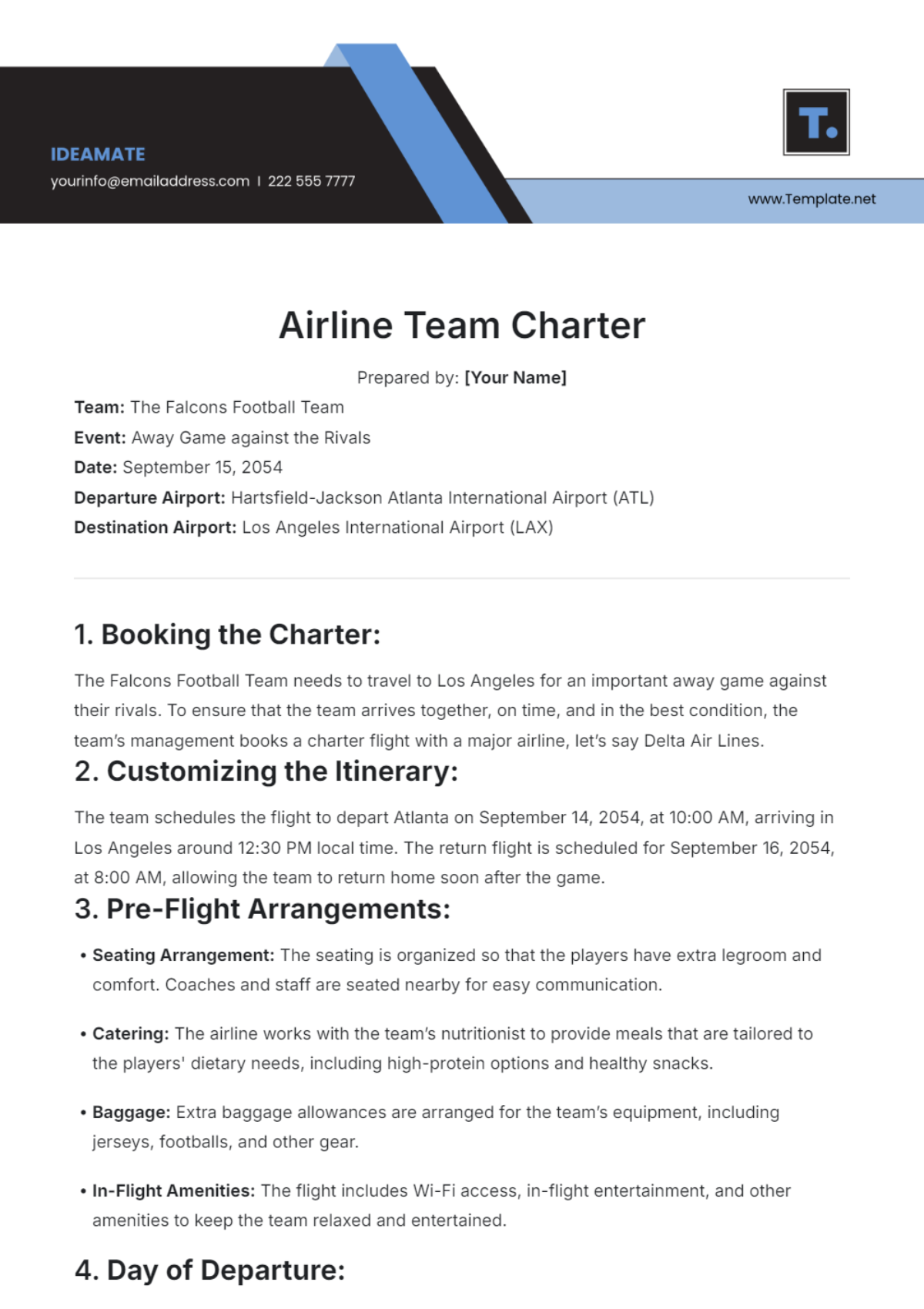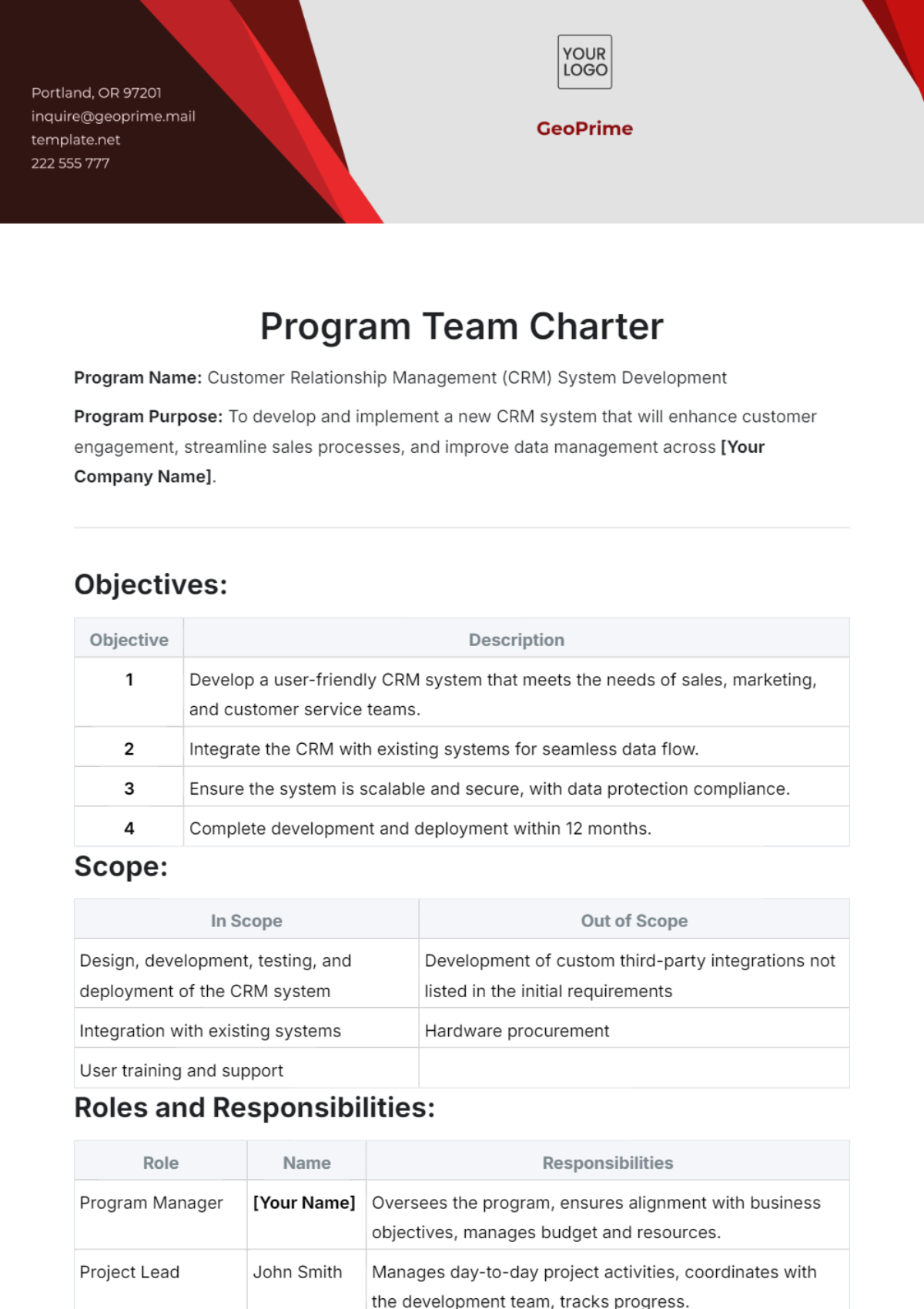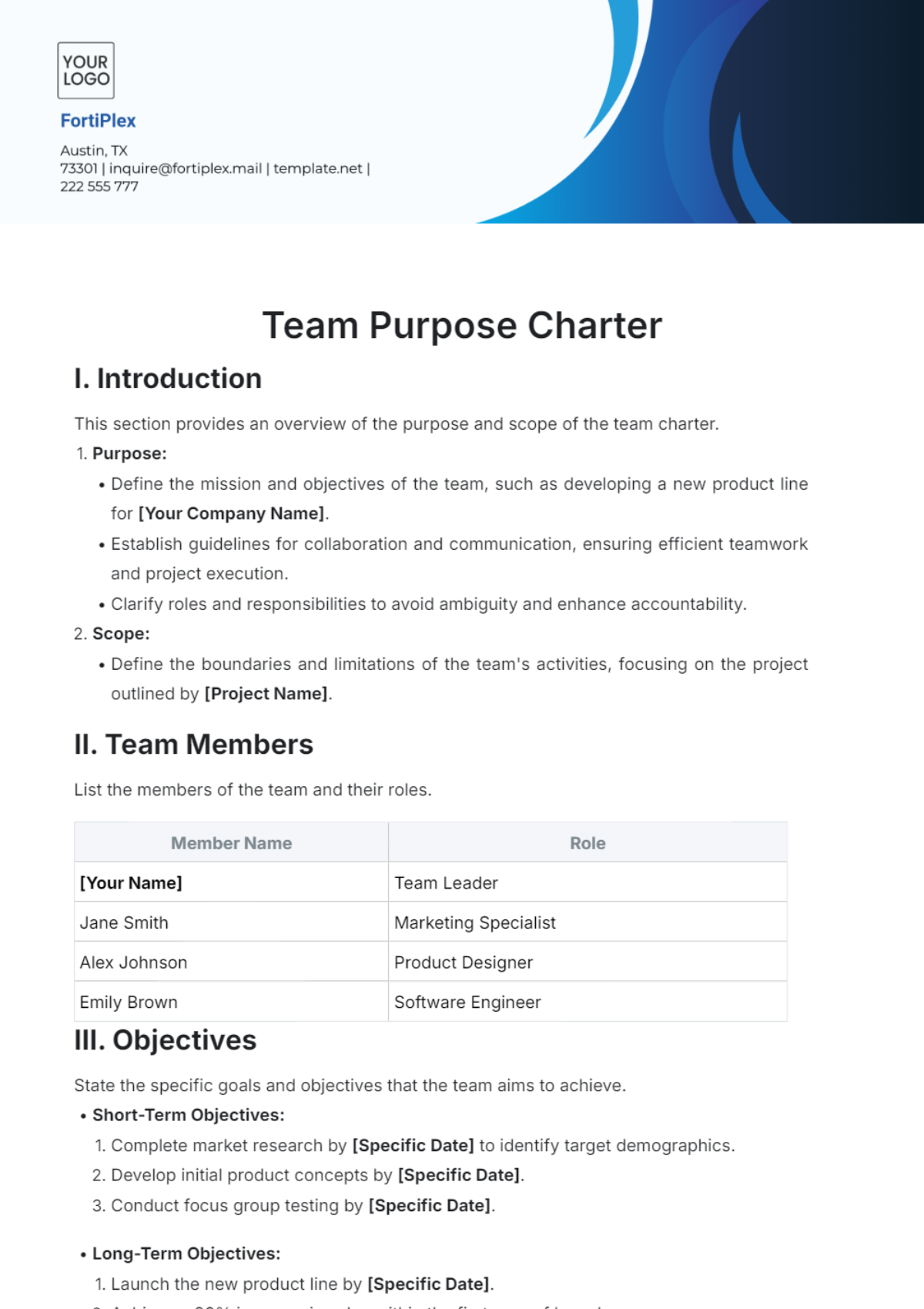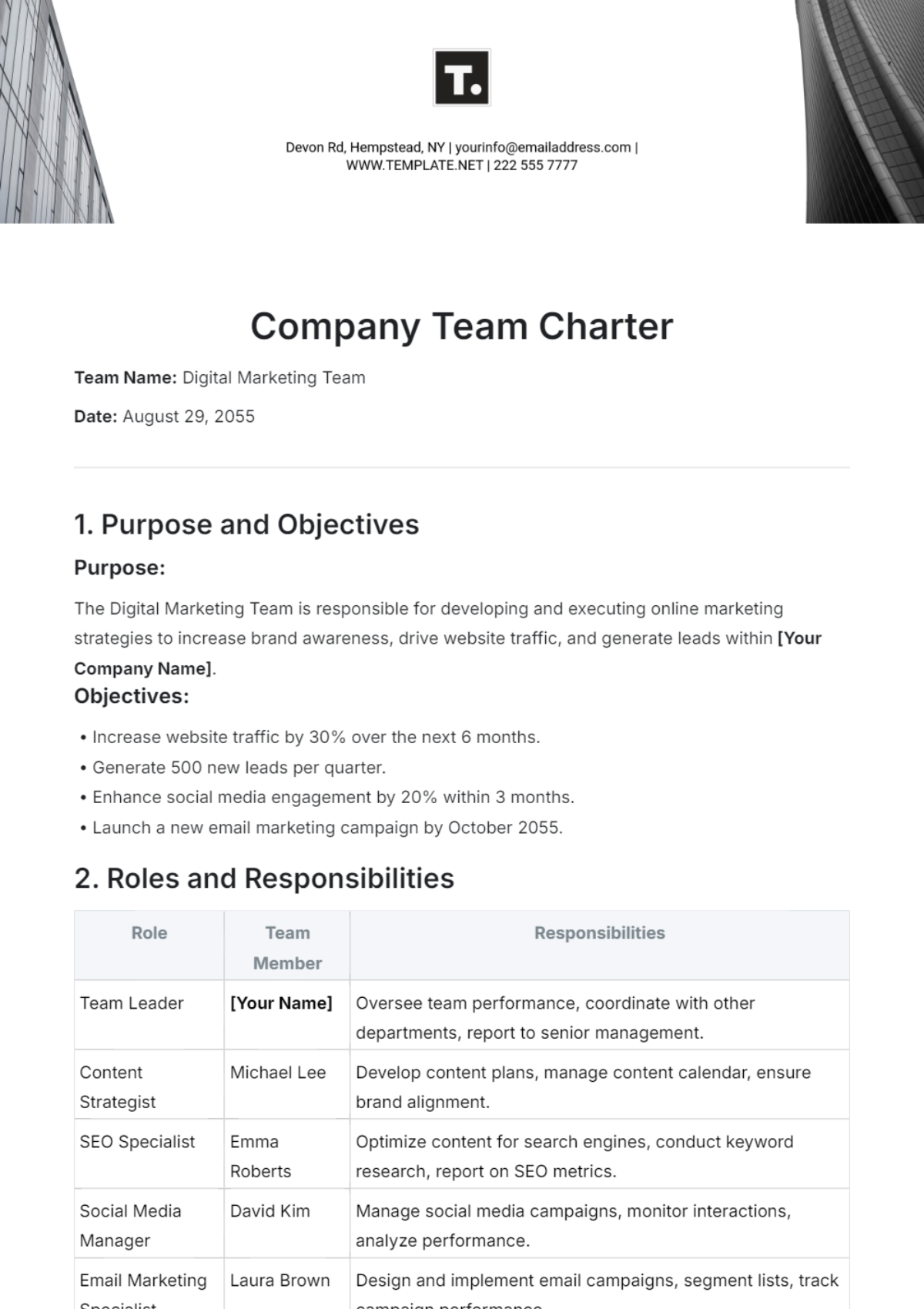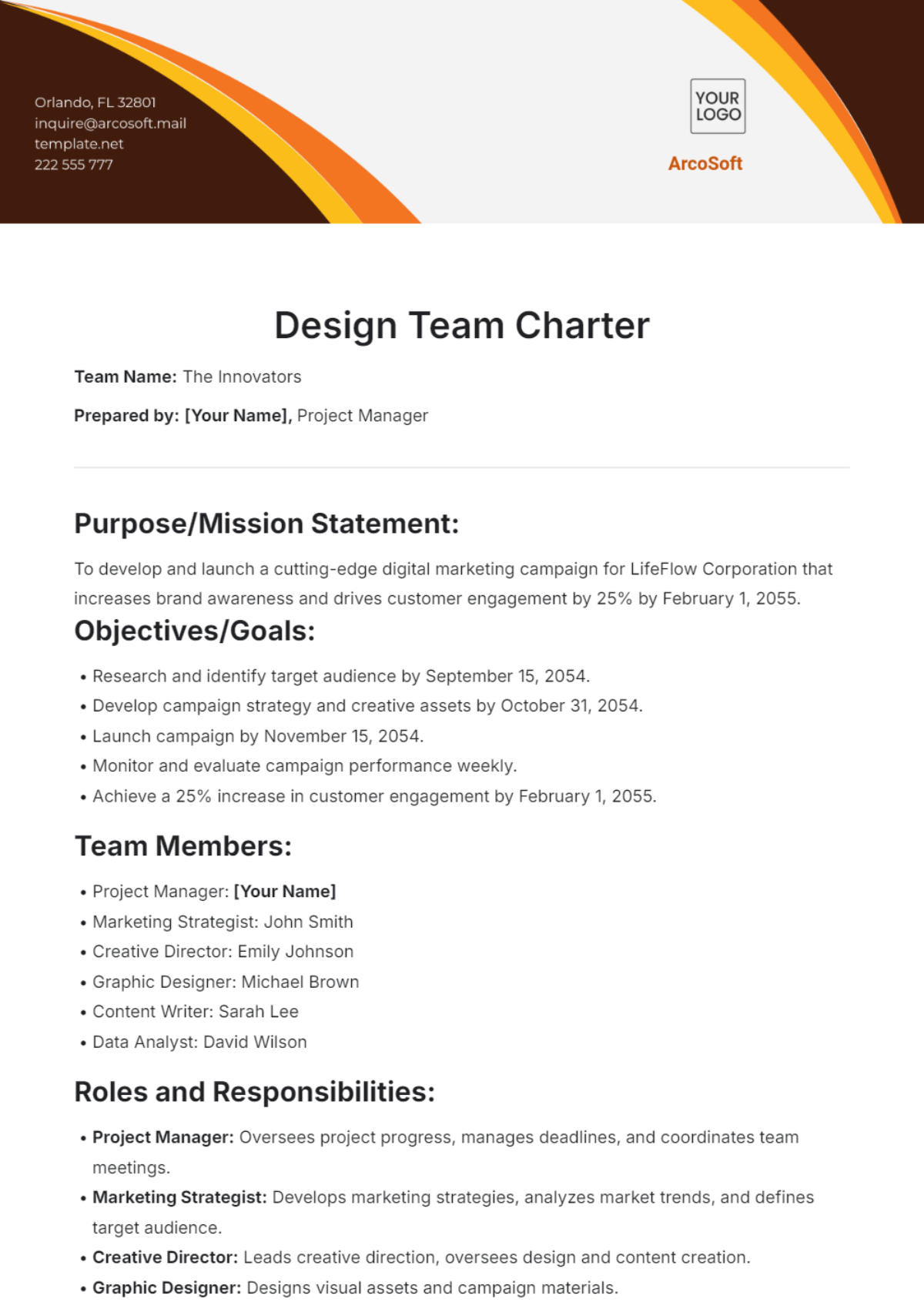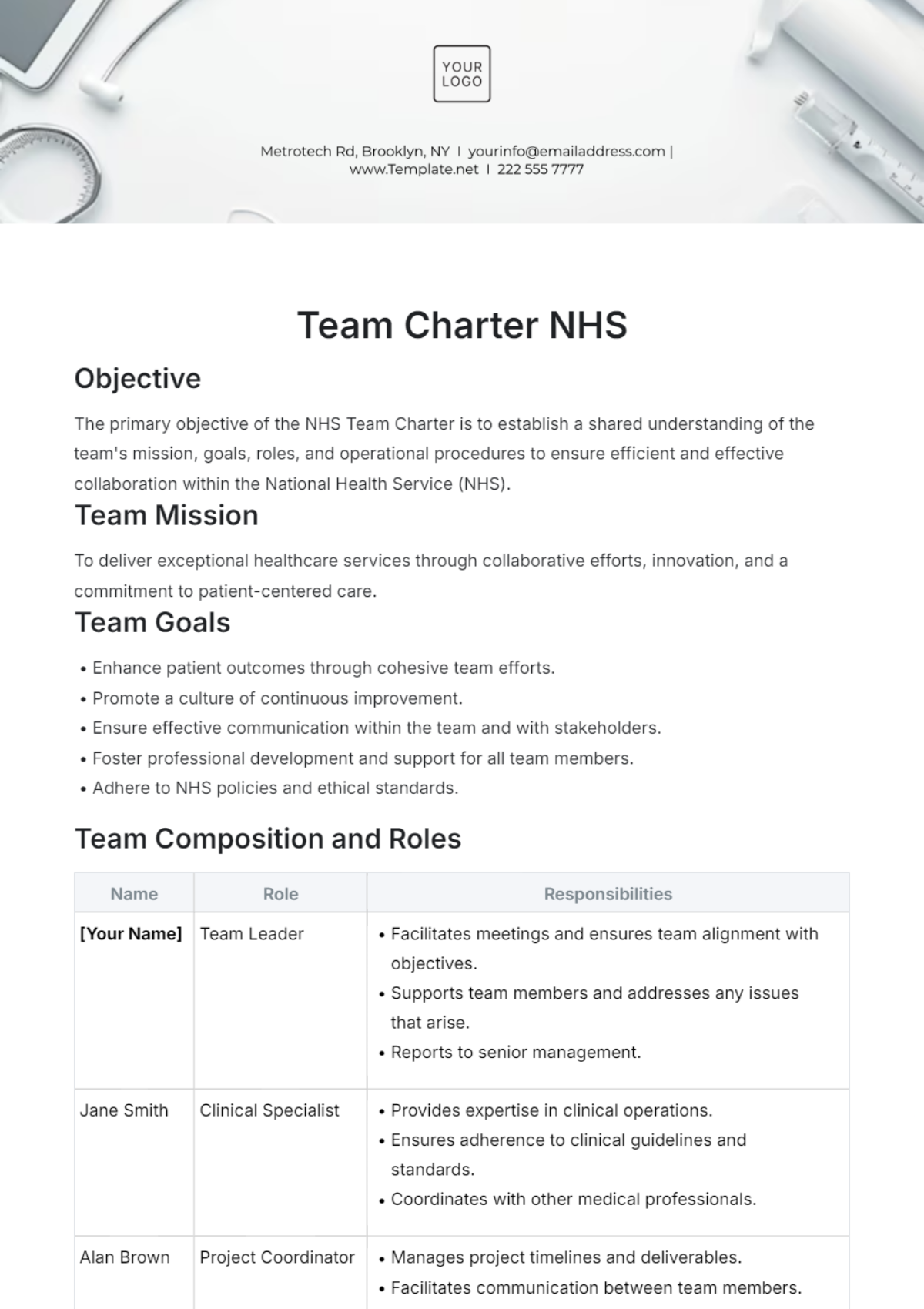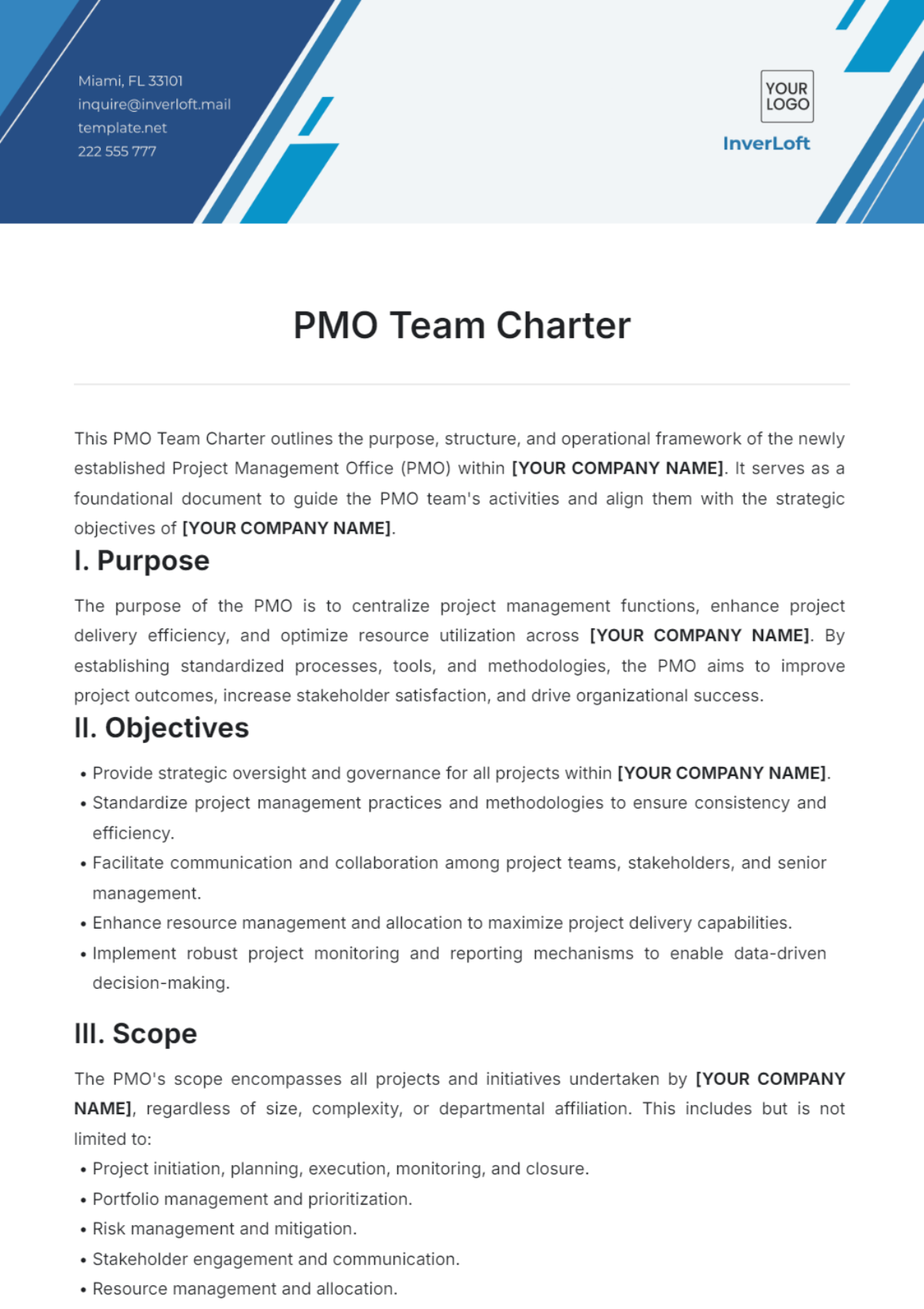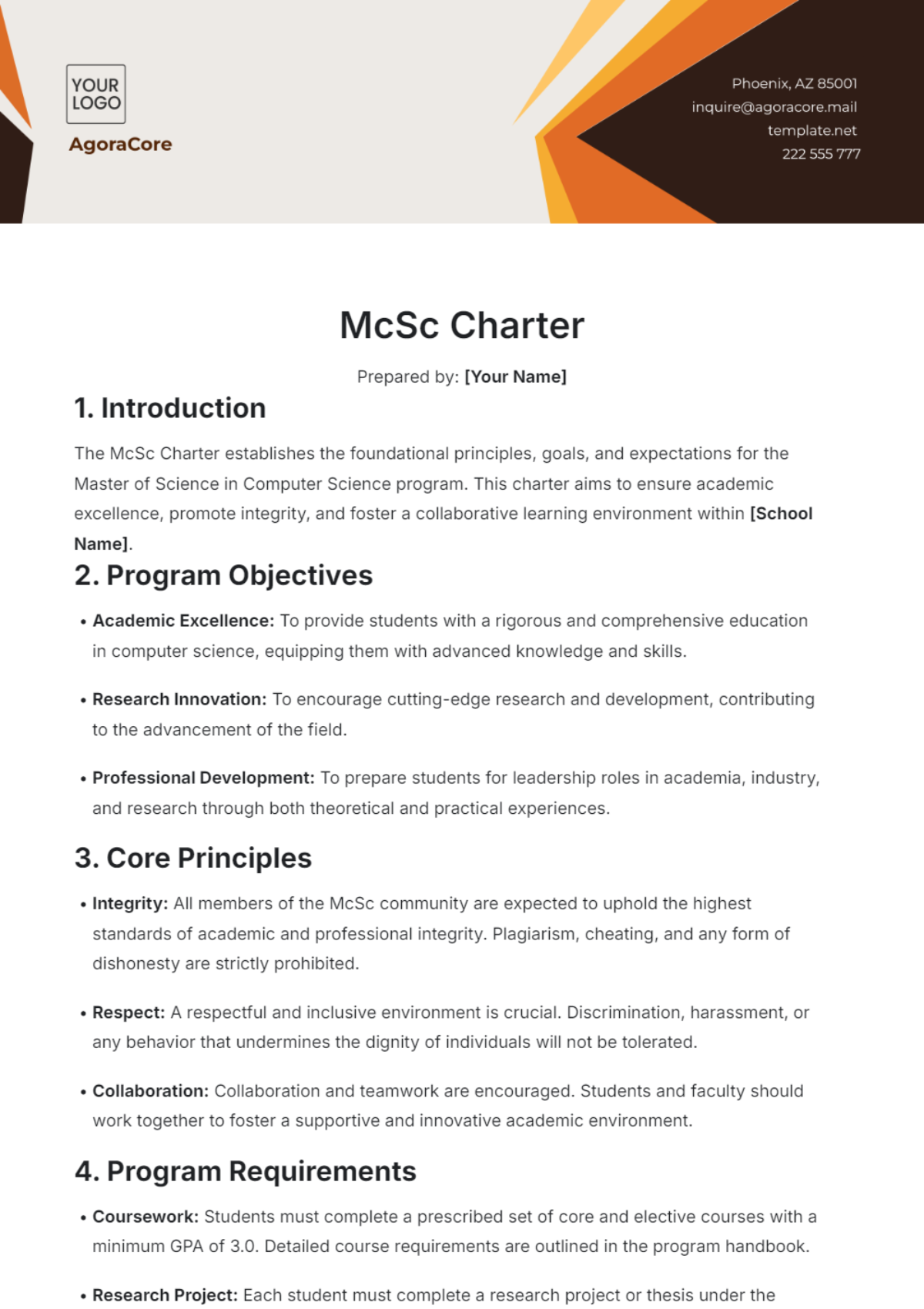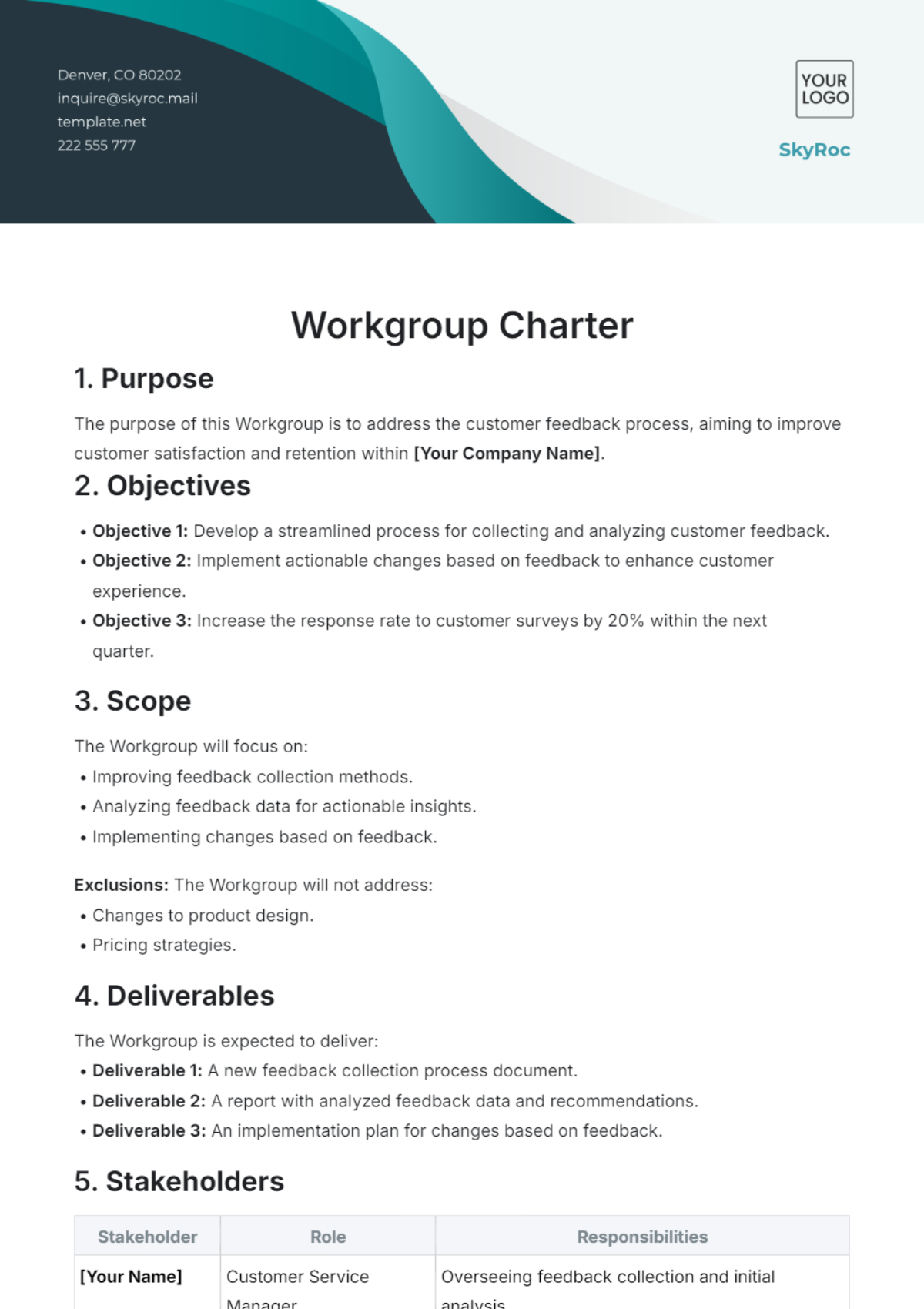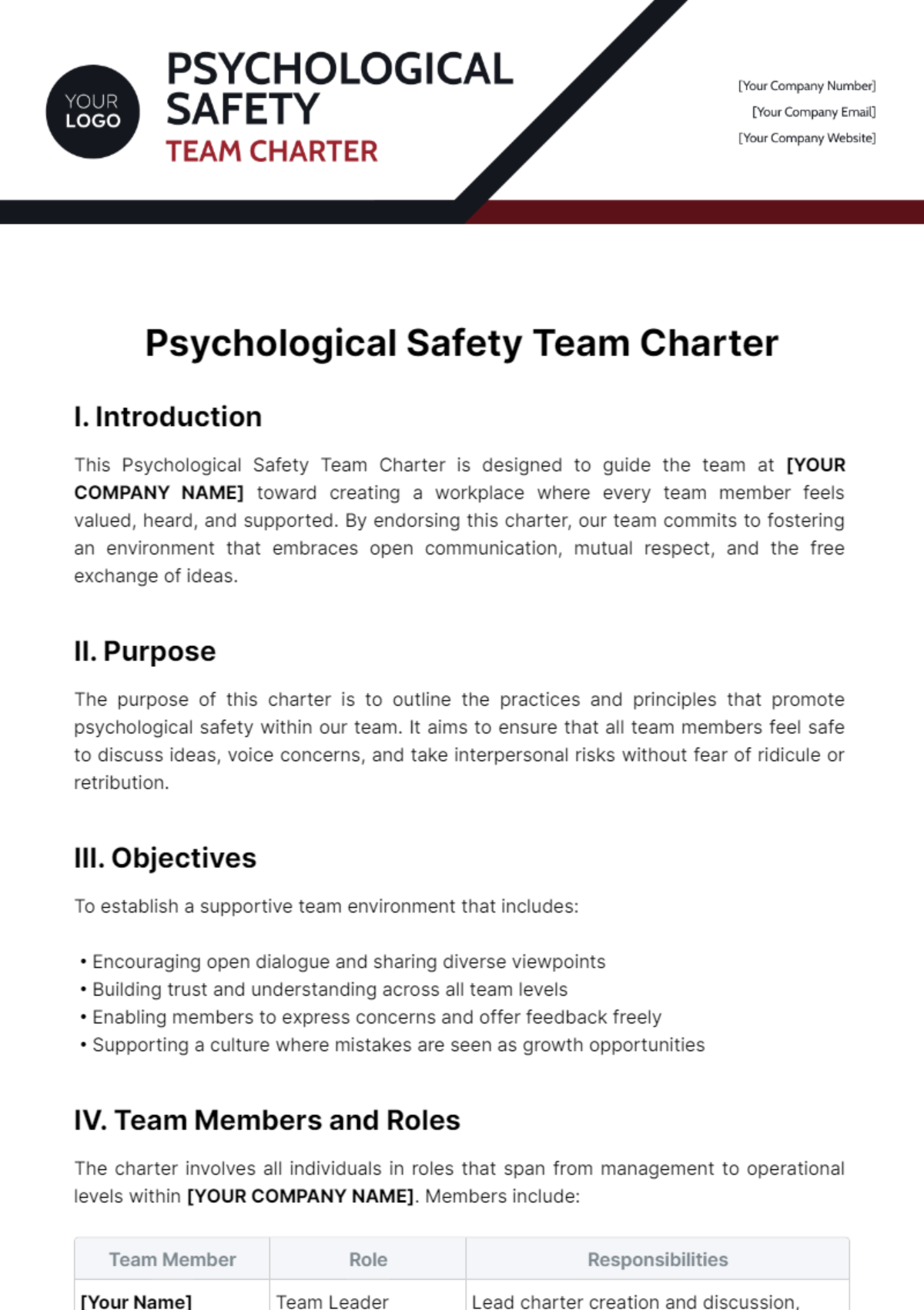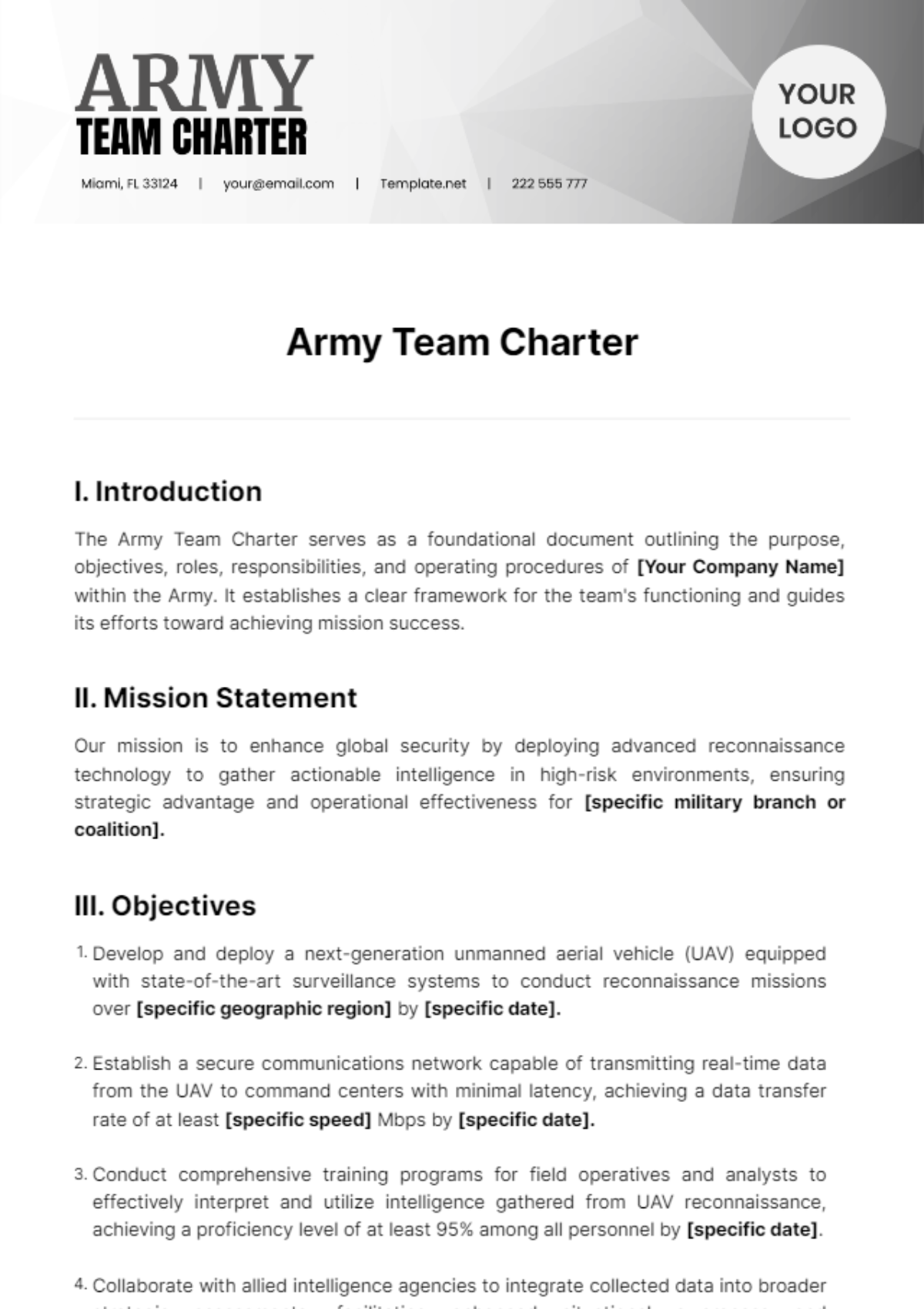Army Team Charter
I. Introduction
The Army Team Charter serves as a foundational document outlining the purpose, objectives, roles, responsibilities, and operating procedures of [Your Company Name] within the Army. It establishes a clear framework for the team's functioning and guides its efforts toward achieving mission success.
II. Mission Statement
Our mission is to enhance global security by deploying advanced reconnaissance technology to gather actionable intelligence in high-risk environments, ensuring strategic advantage and operational effectiveness for [specific military branch or coalition].
III. Objectives
Develop and deploy a next-generation unmanned aerial vehicle (UAV) equipped with state-of-the-art surveillance systems to conduct reconnaissance missions over [specific geographic region] by [specific date].
Establish a secure communications network capable of transmitting real-time data from the UAV to command centers with minimal latency, achieving a data transfer rate of at least [specific speed] Mbps by [specific date].
Conduct comprehensive training programs for field operatives and analysts to effectively interpret and utilize intelligence gathered from UAV reconnaissance, achieving a proficiency level of at least 95% among all personnel by [specific date].
Collaborate with allied intelligence agencies to integrate collected data into broader strategic assessments, facilitating enhanced situational awareness and coordination in [specific theater of operations] by [specific date].
Implement continuous improvement initiatives to enhance the operational efficiency and reliability of UAV reconnaissance missions, reducing mission downtime by at least 20% within the next [specific time frame].
IV. Roles and Responsibilities
Team Leader
The Team Leader oversees mission execution, makes critical decisions, and ensures alignment with objectives. They have full decision-making authority, manage communication channels, and are ultimately accountable for mission outcomes and team well-being.
Team Members
Reconnaissance Operator: Pilots UAV, and collects data.
Intelligence Analyst: Analyzes collected data for actionable intel.
Communications Specialist: Maintains communication systems.
Field Medic: Provides medical support.
Logistics Coordinator: Manages equipment and supplies.
Support Personnel
Administrative Assistant: Provides administrative support.
Technical Support Technician: Maintains equipment.
Security Officer: Ensures security.
Liaison Officer: Facilitates external communication.
V. Operating Procedures
Communication:
Internal: Encrypted radio during missions, and pre and post-operation briefings.
External: Liaison officers handle external communication with allies and authorities.
Decision-Making:
Team Leader has primary authority, and consults team members for input. Urgent decisions made by the Team Leader. Major decisions in consultation with higher command.
Meetings:
Weekly meetings for planning, updates, and lessons learned. Decisions are documented in minutes and implemented promptly.
Task Execution:
Tasks are assigned based on expertise and need. Team Leader monitors progress, members report completion, and issues encountered.
Conflict Resolution:
Promptly addressed with open communication and respect. Direct discussion with the Team Leader or designated channels. Mediation by a neutral party if needed.
VI. Performance Measurement and Evaluation
Metrics
Percentage of completed missions meeting objectives.
Accuracy of intelligence gathered during reconnaissance missions.
Time taken to initiate and complete missions from task assignment.
Percentage of mission time with operational equipment.
Regular assessment of team satisfaction and cohesion.
Evaluation Criteria
Achievement of mission objectives within specified parameters.
Compliance with standard operating procedures and safety protocols.
Proactive problem-solving and innovation in mission execution.
Effectiveness of internal and external communication and teamwork.
Demonstration of learning and improvement over time.
Feedback Mechanisms
Post-mission debriefings to discuss performance and lessons learned.
Team Leader's regular KPI and criteria-based assessments.
Encourage team members to provide feedback directly to leadership.
Use feedback methods such as reports or meetings with superiors and stakeholders.
Mechanisms for anonymous feedback to encourage candid input from team members.
VII. Revision and Amendments
This charter will be periodically reviewed and updated as necessary to reflect changes in mission requirements, team composition, or operating procedures. Any proposed amendments to the charter must be submitted to the designated authority for approval.
VIII. Approval
This Army Team Charter is hereby approved and endorsed by:

Name: [Your Name]
Military Officer - Commander
Date: [Approval Date]
